Testing the Sony Bravia 7 quickly revealed that this television is capable of quite a lot. Although it is the "lowest" model from the Japanese manufacturer in the new 2024 range, it certainly does not feel like a compromise. The picture impressed us with its depth of black and the detail in bright scenes – thanks to the Mini LED technology, which makes a difference. When playing films in Dolby Vision, it was immediately noticeable how much HDR adds life to every scene. The intense colours and excellent dynamics made watching evening screenings a true pleasure for us. Daily use of this television also pleasantly surprised us. The Google TV system worked flawlessly, and the choice of apps was extensive enough that we had no trouble finding everything we wanted to watch. The backlit remote is a small but practical addition – in the evenings, we greatly appreciated not having to fumble around for buttons. Older content that we watched gained quality thanks to the advanced image processing. When we checked the television for gaming, it also left a good impression on us. The 120 Hz refresh rate provided a smooth image, and the low input lag allowed us to enjoy fast and dynamic gameplay. We particularly liked the Game Bar feature – easy access to settings during gameplay is something every gaming enthusiast will appreciate. The television handled even more demanding titles excellently. However, not everything was perfect. Only two HDMI 2.1 ports, one of which is intended for eARC, may be an issue if someone plans to connect several devices simultaneously. Additionally, when we watched the television from an angle, we noticed that the picture quality was not as good as when viewed straight on – the lack of a layer to improve viewing angles was noticeable here. Nevertheless, the Bravia 7 is a television that pleasantly surprised us. It combines excellent picture quality with functionality that works well for both everyday use and during evening screenings or dynamic gameplay. The minor limitations are noticeable, but they do not overshadow the whole, which definitely deserves the attention of a buyer.
- Matching (Score)
- Our verdict
- TV appearance
- Where to buy
- Contrast and black detail
- HDR effect quality
- Factory color reproduction
- Color reproduction after calibration
- Smoothness of tonal transitions
- Image scaling and smoothness of tonal transitions
- Blur and motion smoothness
- Console compatibility and gaming features
- Input lag
- Compatibility with PC
- Viewing angles
- TV efficiency during daytime
- Details about the matrix
- TV features
- Apps
- Playing files from USB
- Sound
Sony Bravia 7 (XR70) vs SAMSUNG OLED S95F (QD-OLED)
Direct compare
BRAVIA 7 / XR70
S95F / FAT / FAE

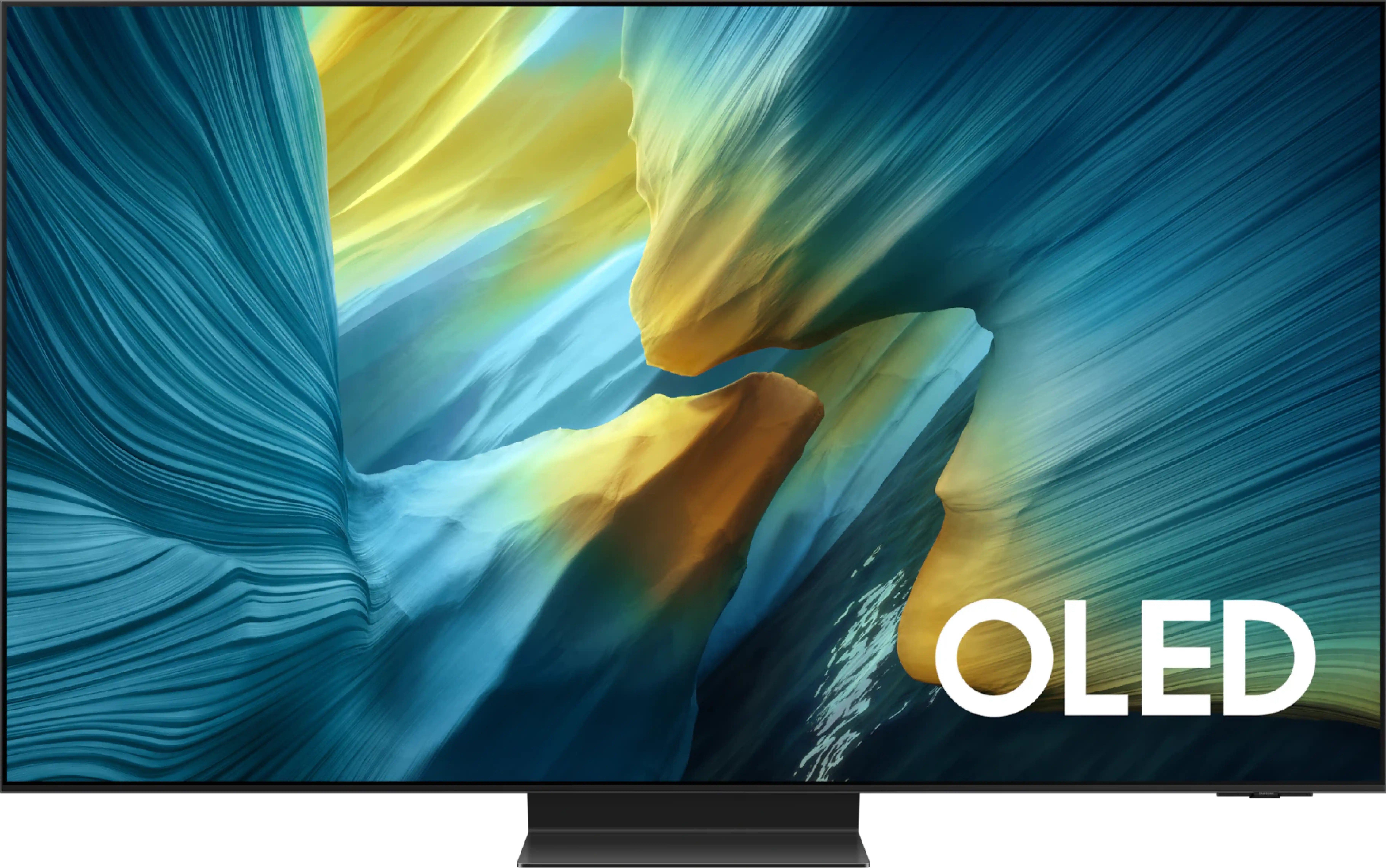
Panel type: LCD VA
Resolution: 3840x2160
System: Google TV
Model year: 2024
Complete the survey to find out the result

Panel type: QD-OLED
Resolution: 3840x2160
System: Tizen
Model year: 2025
Complete the survey to find out the result

Overall rating
8.1
8.7
Movies and series in UHD quality
7.7
9.3
Classic TV, YouTube
7.6
9.3
Sports broadcasts (TV and apps)
7.6
8.9
Gaming on console
8.4
9.9
TV as a computer monitor
7.6
8.8
Watching in bright light
8.4
7.1
Utility functions
8.8
7.9
Apps
9.6
8.7
Sound quality
7.8
8.0
Complete the survey to find out what fits your preferences
Advantages
High brightness
Good contrast
Excellent Dolby Vision support
Google TV – intuitive system, easy access to applications, backlit remote
Very good built-in speakers
Great digital processing
Good for gamers - HDMI 2.1, many features, low input lag
Perfect black and excellent contrast
High image brightness
Amazing image quality after calibration
Ultra-fast QD-OLED 165 Hz panel
The best choice for gamers – full support for HDMI 2.1, VRR, ALLM, and HGiG, input lag of just 5 ms (highest rating on the portal!)
Best reflection suppression thanks to the matte screen finish
Wide viewing angles without loss of quality – top level thanks to the QD-OLED panel
Intuitive and fast Tizen operating system with a rich set of features
Modern and elegant design
The One Connect module makes it easy to aesthetically hide cables
Disadvantages
No expansion coating for wide viewing angles at this price
Only 2 HDMI 2.1 ports - including one ARC
No support for DTS:X (home cinema)
No recording to USB from built-in tuners
Cherry black effect in very difficult lighting conditions
Our verdict
Samsung S95F is an excellent continuation and simultaneously an enhancement of last year's model S95D. Thanks to the QD-OLED panel, we receive an image that impresses from the first minutes of viewing. The black is deep and natural, with no signs of backlighting, and the brightness of the new generation panel reaches levels that just recently seemed beyond the reach of OLEDs. These values are so high that the S95F can confidently be compared with the best Mini-LED screens - both in terms of HDR effect and in everyday use under strong daylight. After a slight adjustment of the settings, the television can offer a reference image, creating a cohesive and cinematic experience. However, it's not just a screen for movie buffs but also one of the absolute favourites for gamers. The 165 Hz panel with lightning-fast response, input lag of just a few milliseconds, a full package of gaming features - including VRR, ALLM, and exceptionally implemented HGiG - along with four HDMI 2.1 ports, make the S95F effortlessly meet the demands of both next-gen console owners and PC gamers. This complete set of possibilities makes the S95F one of the best gaming televisions on the market. Samsung has also taken care of user-friendly details. The matte screen coating effectively eliminates reflections, ensuring that even in a bright living room, the image remains clear and comfortable. The One Connect module organizes the cabling, moving all the connections to a separate box, which will be appreciated by anyone who likes to regularly juggle connected devices. The design of the television is slim, elegant, and thoughtful – it is evident that this is a Super Premium class product that looks great in any interior. Of course, like any equipment, the S95F has its minor compromises, but given its class and completeness, it's easy to forget about them.
This is a television that combines the best picture quality with functionality and user comfort. Undoubtedly, it stands up to the strongest competition and can be confidently regarded as one of the main contenders for the title of television of the year 2025.
TV appearance




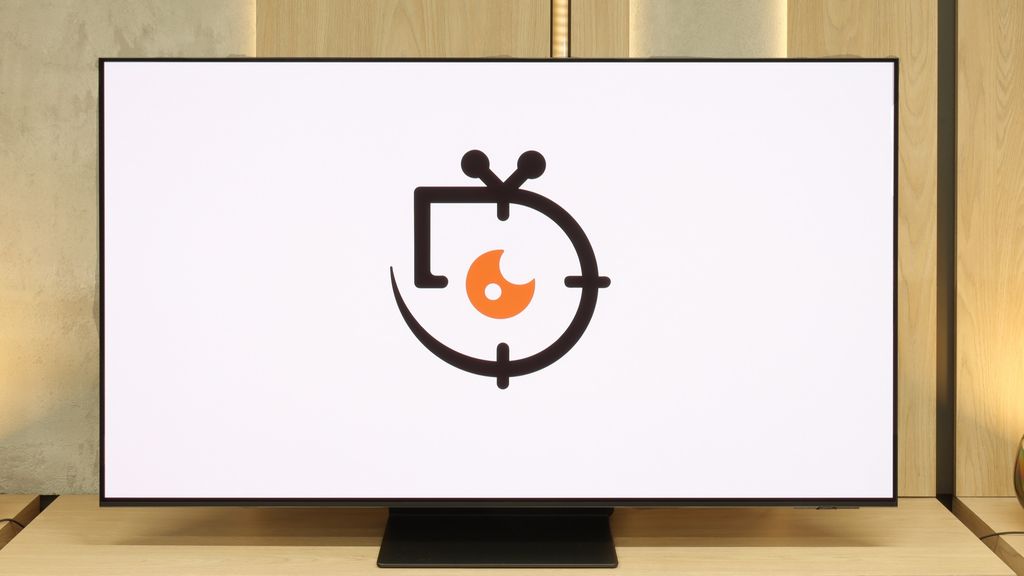
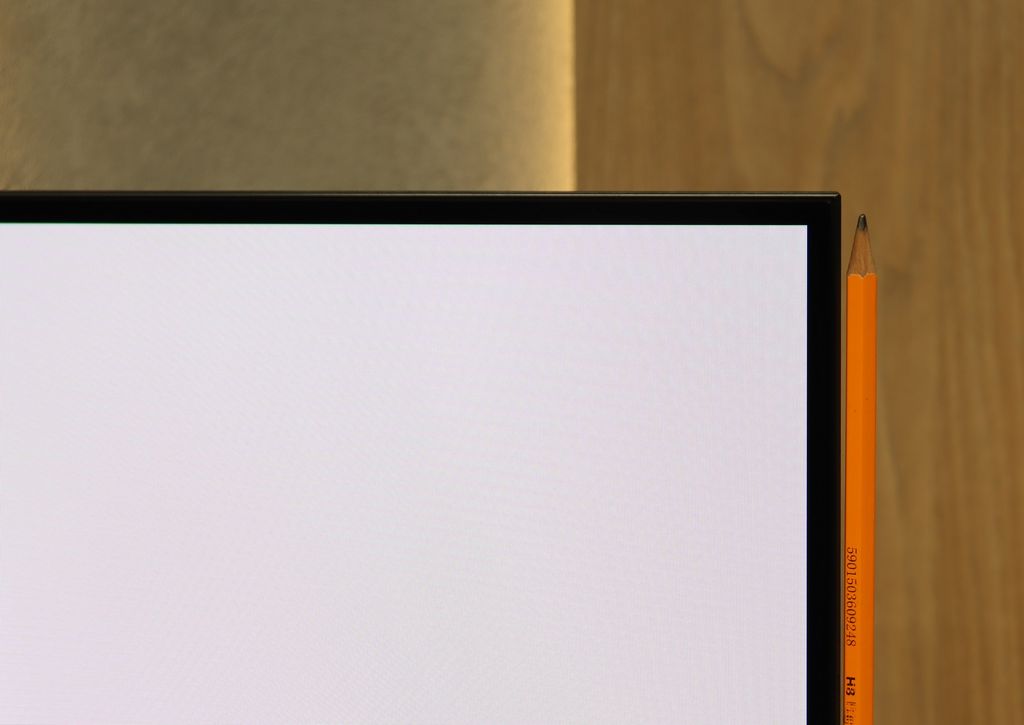
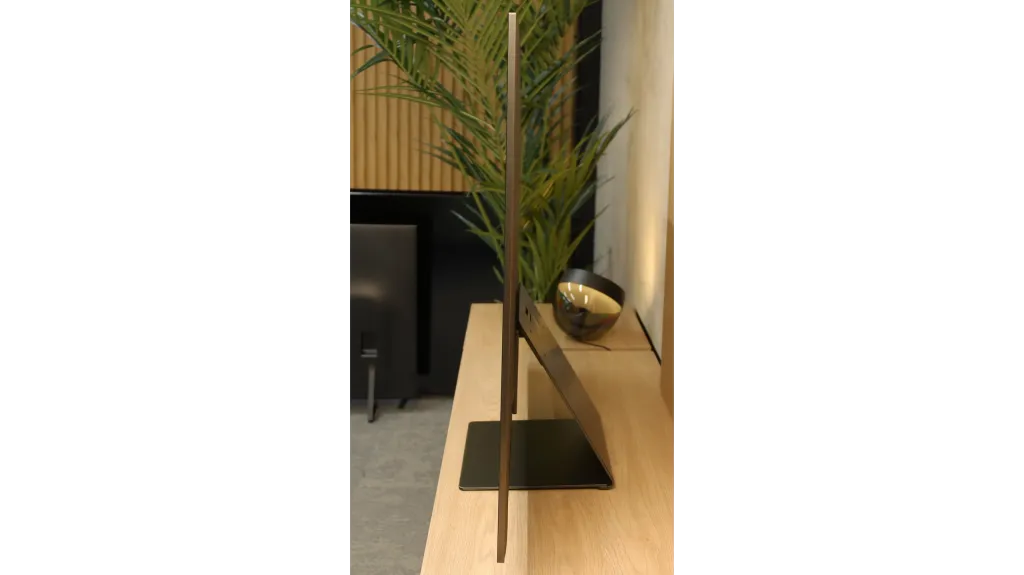
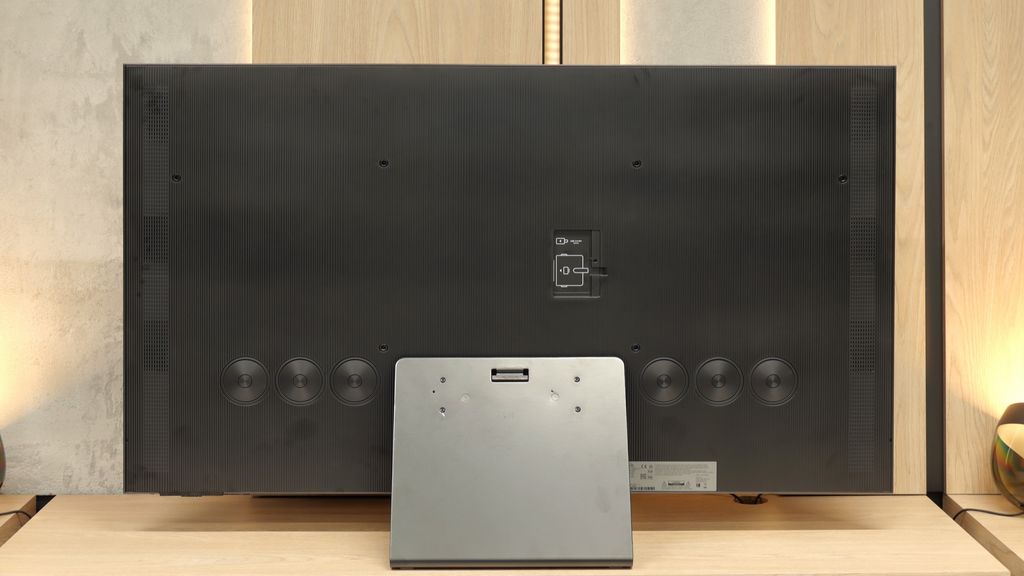
Contrast and black detail
7.7/10
10/10
Local dimming function: Yes, number of zones: 512 (32 x 16)
Contrast:

Result
190,000:1

Result
14,700:1

Result
45,000:1

Result
4,400:1

Result
4,800:1

Result
∞:1

Result
∞:1

Result
∞:1

Result
∞:1

Result
∞:1
Halo effect and black detail visibility:

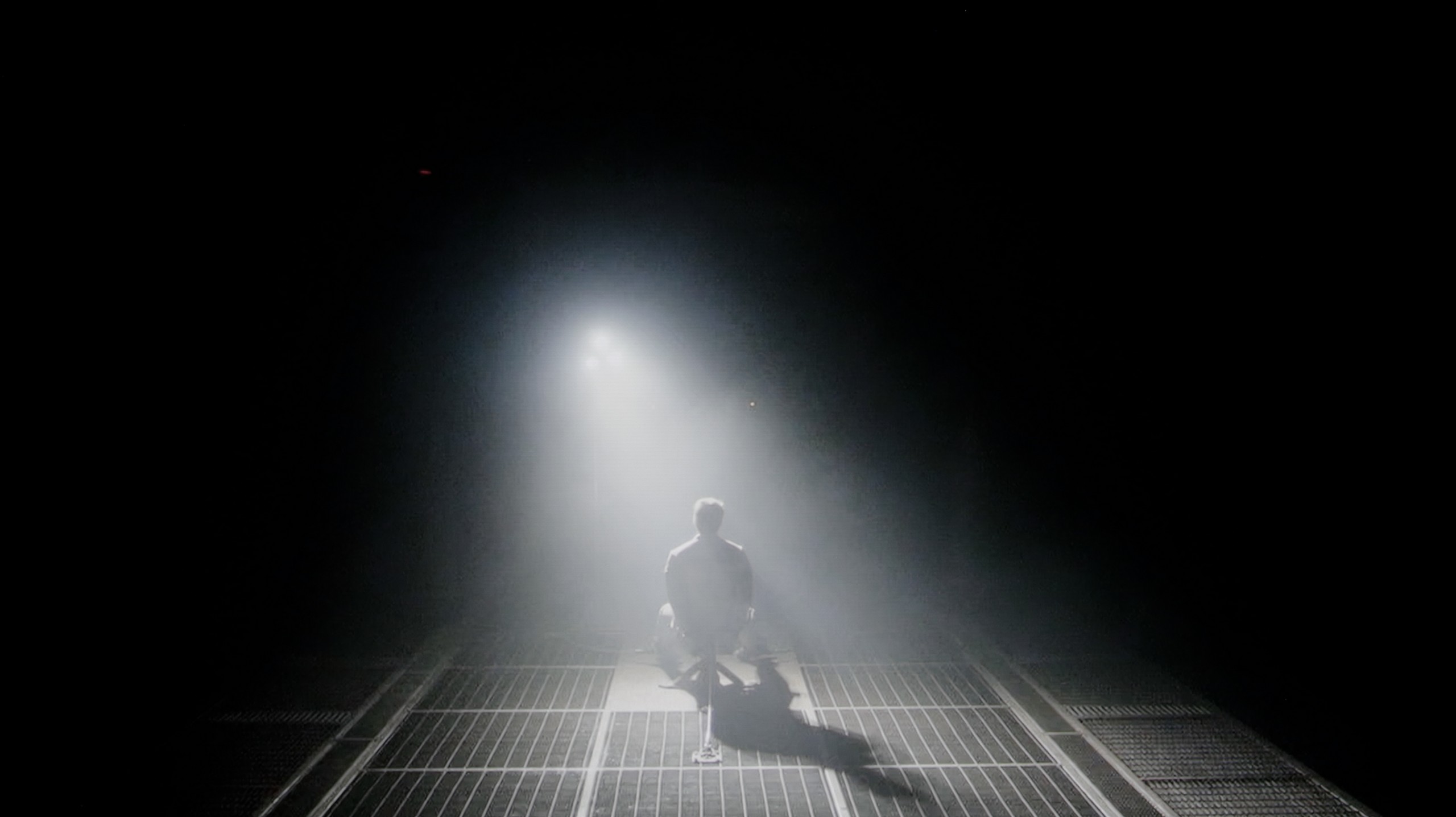
The Sony BRAVIA 7 television with a VA panel and MiniLED backlighting technology offers excellent black quality. The tested 65-inch variant is equipped with 512 dimming zones, which allows for very good contrast, particularly in demanding movie scenes. Naturally, larger sizes of the television have more zones, positively impacting contrast and image depth. During testing, in scenes from the film "Oblivion," the BRAVIA 7 performed excellently in capturing dark and light areas, providing decent separation of lights (the light effect did not blur into a large spot) from deep black. However, as is often the case with televisions featuring local dimming, certain difficulties arise with small, bright light elements. In more demanding segments (e.g., scenes 4 and 5), it is noticeable that the television "struggles" to maintain high brightness of these elements, affecting the contrast – bright objects are either too dark (resulting in poor contrast) or a slight halo effect appears around them. In a scene from the film Sicario 2, the action of the zones can be seen, causing the aforementioned effect, but it is slight. Despite these minor imperfections, the overall impression is positive – the local dimming algorithm works really well, ensuring that the image maintains high contrast, and the quality of black and details is satisfying.
The Samsung S95F with a QD-OLED panel demonstrates that when it comes to blacks and contrast, it's hard to find anything better. Even the first test scenes prove that this television can achieve absolute black, while flawlessly reproducing even the tiniest points of light. The effect is stunning – a star-filled sky looks as if it has been taken directly from an observatory, and the cinematic shadows gain depth and drama. Details in the shadows are preserved with reference-level accuracy, making the experience of watching cinema at home take on a new dimension.
HDR effect quality
7/10
8.7/10
Luminance measurements in HDR:

Result
1322 nit

Result
624 nit

Result
1133 nit

Result
457 nit

Result
989 nit

Result
2044 nit

Result
2159 nit

Result
2167 nit

Result
2180 nit

Result
1427 nit
Scene from the movie “Pan” (about 2800 nits)


Scene from the movie “Billy Lynn” (about 1100 nits)


Static HDR10


Dynamic: Dolby Vision
Dynamic: HDR10+


HDR luminance chart:
SAMSUNG OLED S95F (QD-OLED)
HDR luminance
Sony Bravia 7 (XR70)
HDR luminance
Since we know that the television handles contrast well, let's check how it performs in terms of HDR effects. The luminance graph shows the very high capabilities of this model – 1500 nits is a truly impressive result. The HDR effects are particularly striking in scenes where most of the screen is covered in light, such as in scenes 1, 3, and 5 of the test. Minor shortcomings, typical of this technology, are still visible with very small light effects, as in the scene from the film "Sicario 2," where brightness drops to 500 nits. Although these are not stunning results, they can be considered decent. Additionally, it is worth praising the television for its high coverage of a wide colour gamut – DCI-P3 at 96%, which allows for vibrant, saturated colours.
The new generation of QD-OLED matrices in the Samsung S95F shows its full potential, with brightness results that are truly stunning. In test film scenes like "Life of Pi" or "Sicario 2," where smaller light elements appear – stars, the moon, or headlights – the television managed to achieve over 2000 nits of brightness. This is a result that surpasses even most top-of-the-range Mini-LED models.
The secret lies in the technology itself – instead of a limited number of dimming zones like in Mini-LED televisions, here we have millions of emitting pixels, allowing the television to fully showcase its power without technological compromises. Of course, as this is still an organic panel, in full-screen scenes flooded with white – like in the final sequence of the film The Meg – the brightness drops to around 1400 nits. Nevertheless, the result remains excellent and clearly exceeds what any OLEDs, both QD-OLED and WOLED, have offered so far. The colour reproduction is also particularly noteworthy. Thanks to QD-OLED technology, the television achieves nearly 100% coverage of the DCI-P3 colour space and about 80% in BT.2020. These values make HDR images not only dazzling in brightness but also captivating in the richness of colours.
Factory color reproduction
6.7/10
6/10


Factory Mode
After calibration
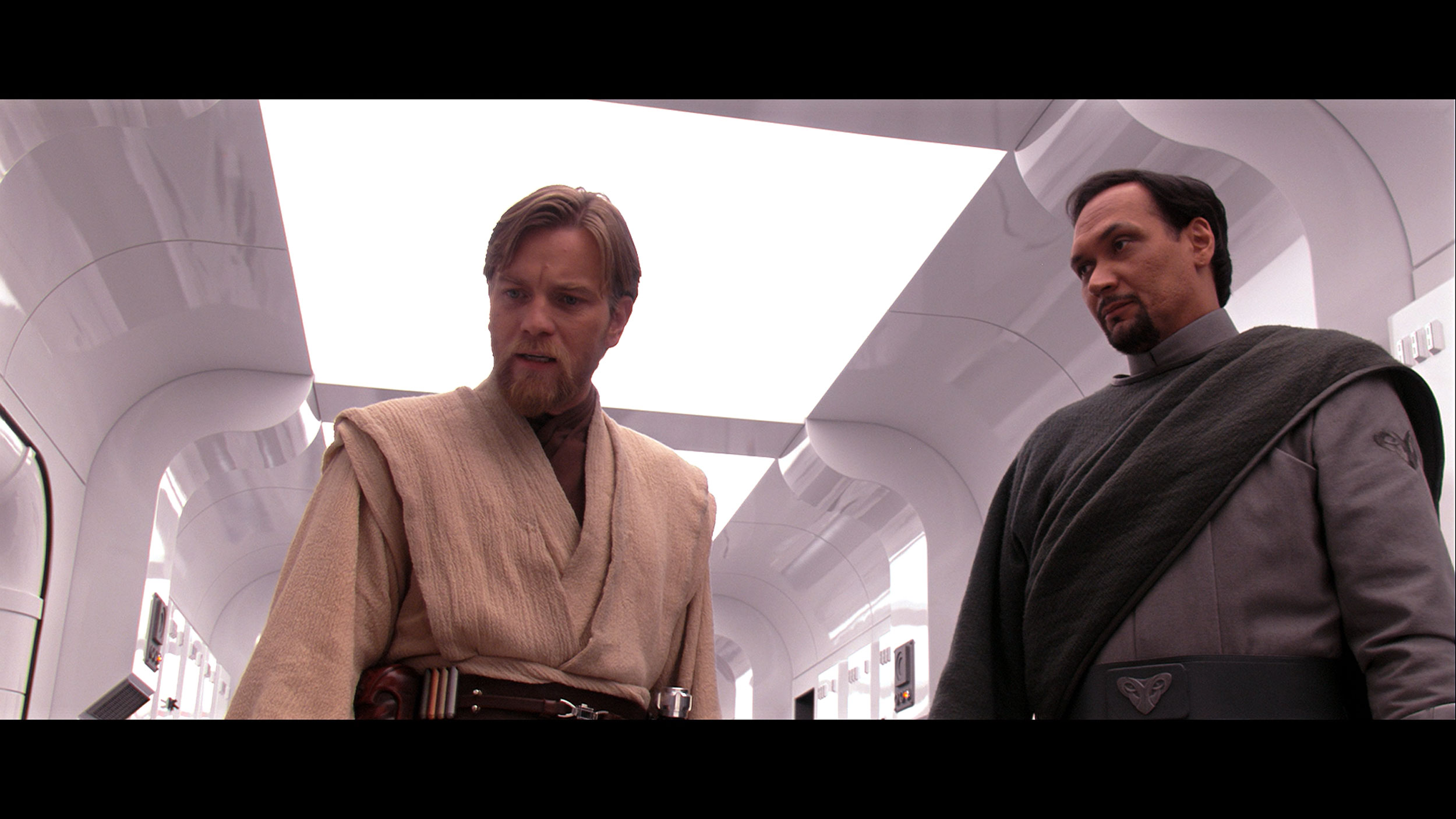
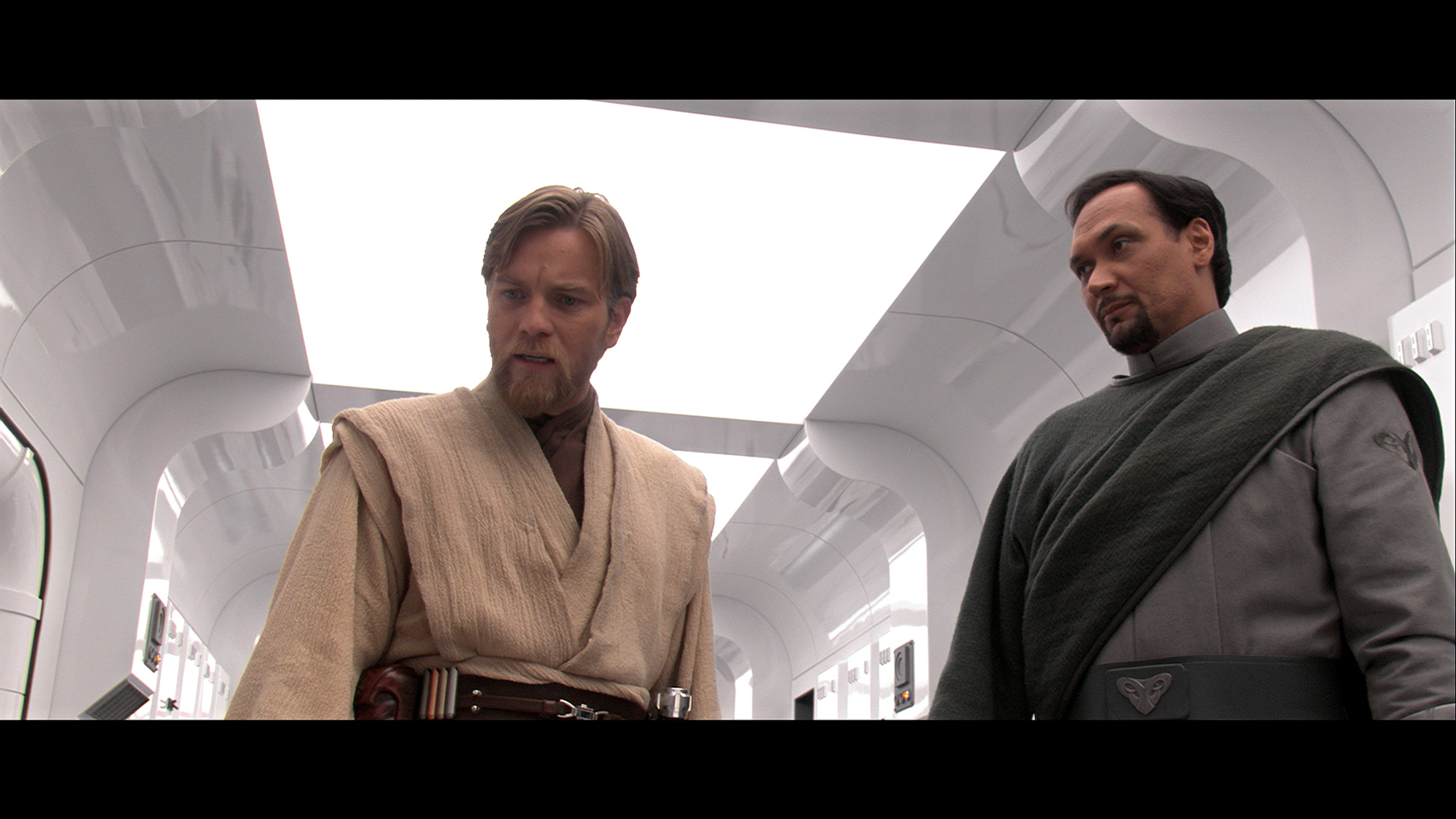
Factory Mode
After calibration
The IMAX Enhanced mode on the Sony BRAVIA 7 television is undoubtedly the best mode available on this model, although it is not without its flaws, as its name might suggest. The biggest issue is the white balance – both in HD and 4K HDR content, there is a clear dominance of red, which causes the image to take on pink hues. This is particularly noticeable on the tested snow pattern, where the pinkish tint becomes very apparent. Errors in the Colour Checker test also confirm these deviations – although they are not catastrophic, there is a tendency to drift towards warmer colours. As for brightness performance, the gamma remains at a decent level with a slight peak but without major issues. However, the biggest challenge comes from 4K materials. It is clear that the EOTF curve is significantly above the reference graph, which causes the image to become overly brightened.
The best picture mode straight out of the box is undoubtedly Filmmaker Mode – a mode that Samsung has been using for several years, designed to faithfully convey the creators' intent. In SDR content, its implementation is not bad, although some imperfections can be observed. The image is slightly dimmed, and the screen has a subtle pinkish tint due to the dominance of red and blue in the white balance. Colour errors were maintained at a level of 3–4 ΔE units – and for those who are not familiar: a value above 3 is the threshold at which the average human eye starts to notice differences.
However, much greater problems arise in HDR content. Here, the white balance was not such a significant issue – a slight excess of blue did not significantly hinder the viewing experience. The problem became managing brightness. In practice, the television "blasted" the image too much, causing details in the blacks to completely disappear. The final effect was far from expected, and colour errors in this mode became quite pronounced. It's hard to say why such a design decision was made, but it was evident that the factory HDR settings did not allow this television to showcase its full capabilities.
Color reproduction after calibration
9.1/10
9.4/10

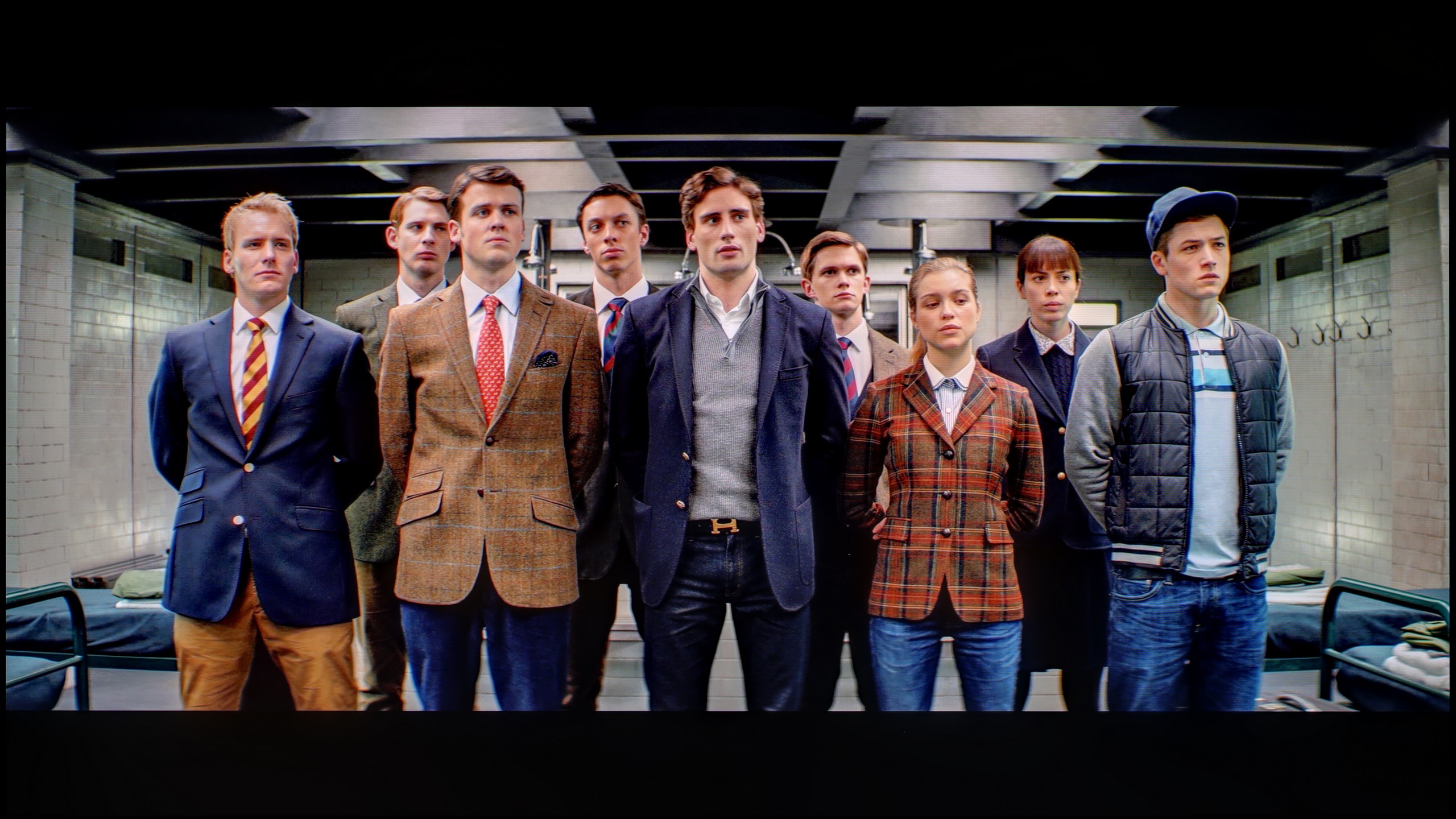


Sony BRAVIA XR70 offers a wide range of tools that allow for adjusting the picture to individual preferences, enabling us to make significant adjustments to the settings. The white balance has been free from the problem of red colour dominance – snow no longer takes on pink shades, which was previously noticeable. Although one can detect slight deviations in the final part of the white balance graph, concerning a drop in blue colour, they are acceptable and difficult to notice in everyday use. The Colour Checker test confirms that errors in colour reproduction are no longer as pronounced and rarely exceed a value of 2, which is a very good result. As for brightness, gamma, while not requiring much improvement, was slightly adjusted. The most significant change was noted in the EOTF curve – the television no longer has issues with excessively brightening the entire image in 4K material. However, upon closer analysis and the inclusion of EOTF characteristics in film material, some limitations of the television become apparent due to the previously discussed dimming algorithm. Some small elements may be slightly more brightened, but these errors are so minor that most users will not notice them. Overall, the calibration results are very, very positive.
After calibration, it was possible to make subtle adjustments to the white balance and significantly improve the image characteristics. In SDR content, the quality has become practically reference-level – most colour errors have fallen below a ΔE value of 1, which is the level at which the human eye can no longer discern differences. This is a result that places the S95F among the very best televisions available on the market.
In HDR materials, the calibration also brought about a significant improvement. The television's tendency to blow out highlights has been brought under control, as confirmed by the analysis of the EOTF curve. A slight tendency to brighten the entire scene or occasional loss of detail in blacks can still be observed, but this does not significantly affect the overall perception. After calibration, the S95F reveals its full potential and can be described as one of the best televisions on the market!
Smoothness of tonal transitions
9/10
8.9/10





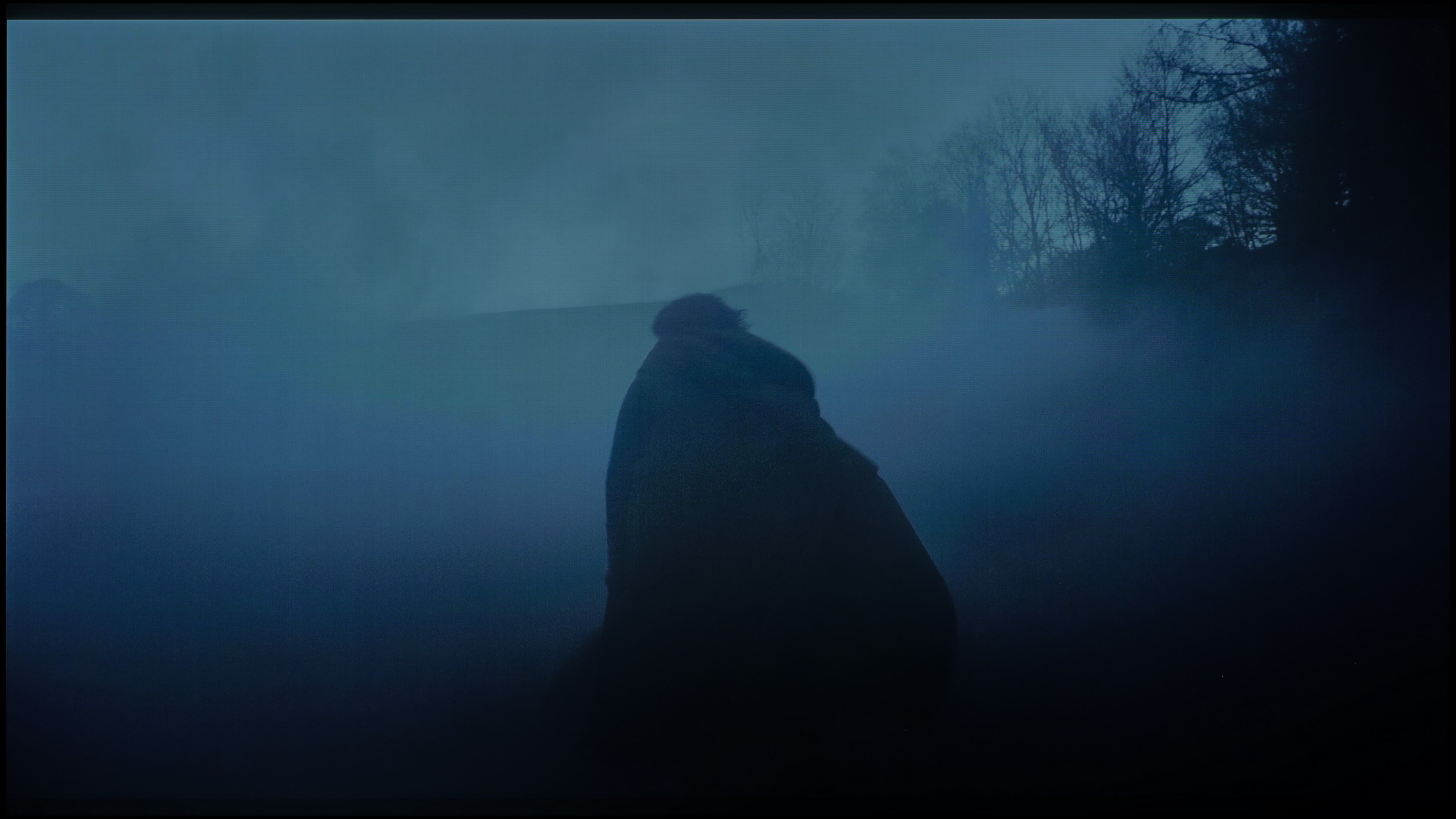

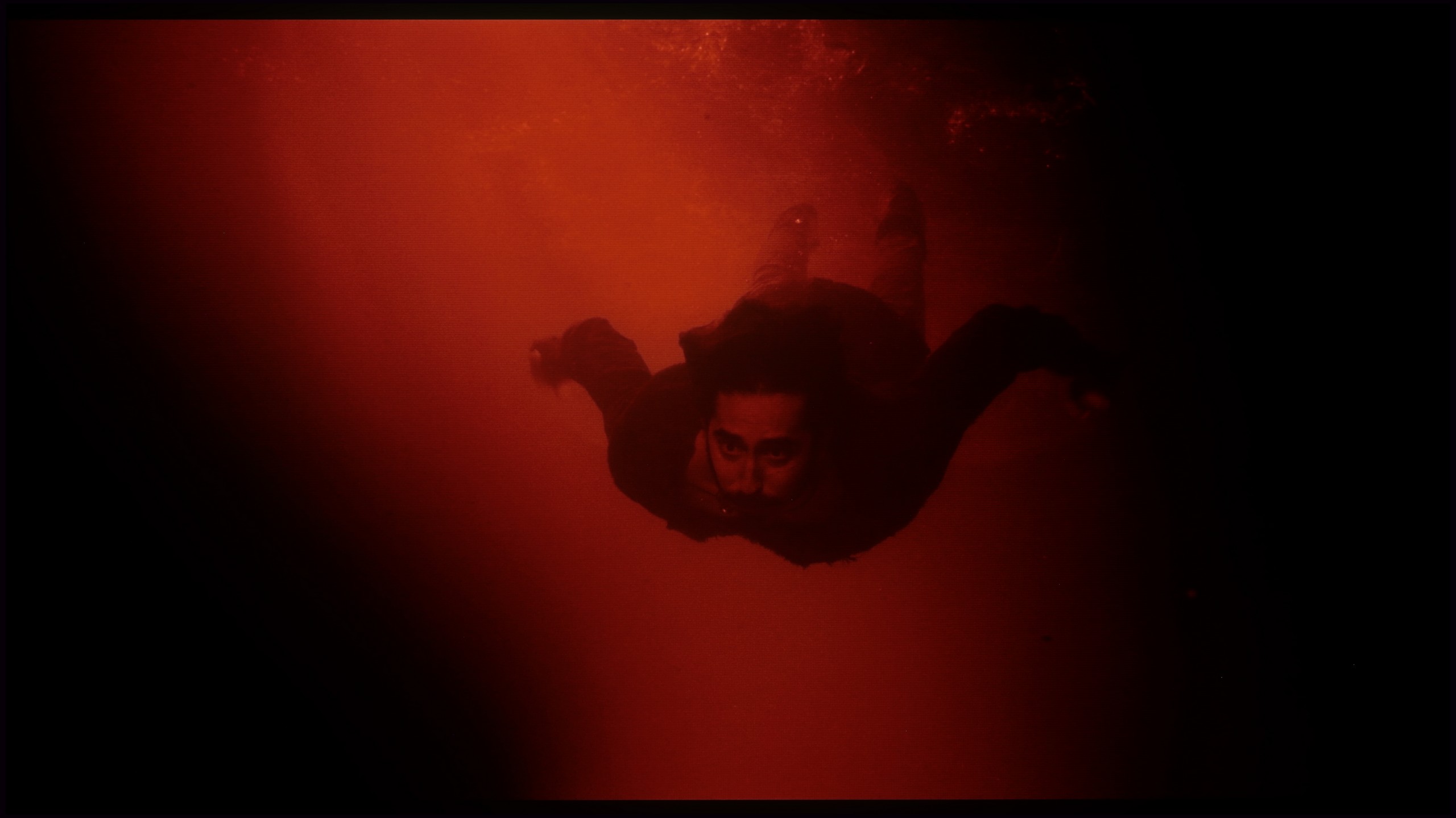




The Sony XR70 television handles gradation excellently. In the test sequence, only a few scenes exhibit slight issues with tonal transitions in dark areas; however, most of these problems disappear when the gentle gradation option is switched on. Generally speaking, the television offers great gradation that will satisfy even the most demanding users.
The Samsung S95F with a QD-OLED panel handles tonal transitions really well. It's difficult to find serious issues here – the colour gradation is smooth, and the image looks natural. Only in very dark scenes and shades close to black can slight imperfections be noticed, but they don't significantly impact everyday viewing. The overall impression is that the fluidity of transitions is at a very high level and does not distract the viewer's attention.
Image scaling and smoothness of tonal transitions
8.5/10
7.5/10
Smooth transition function

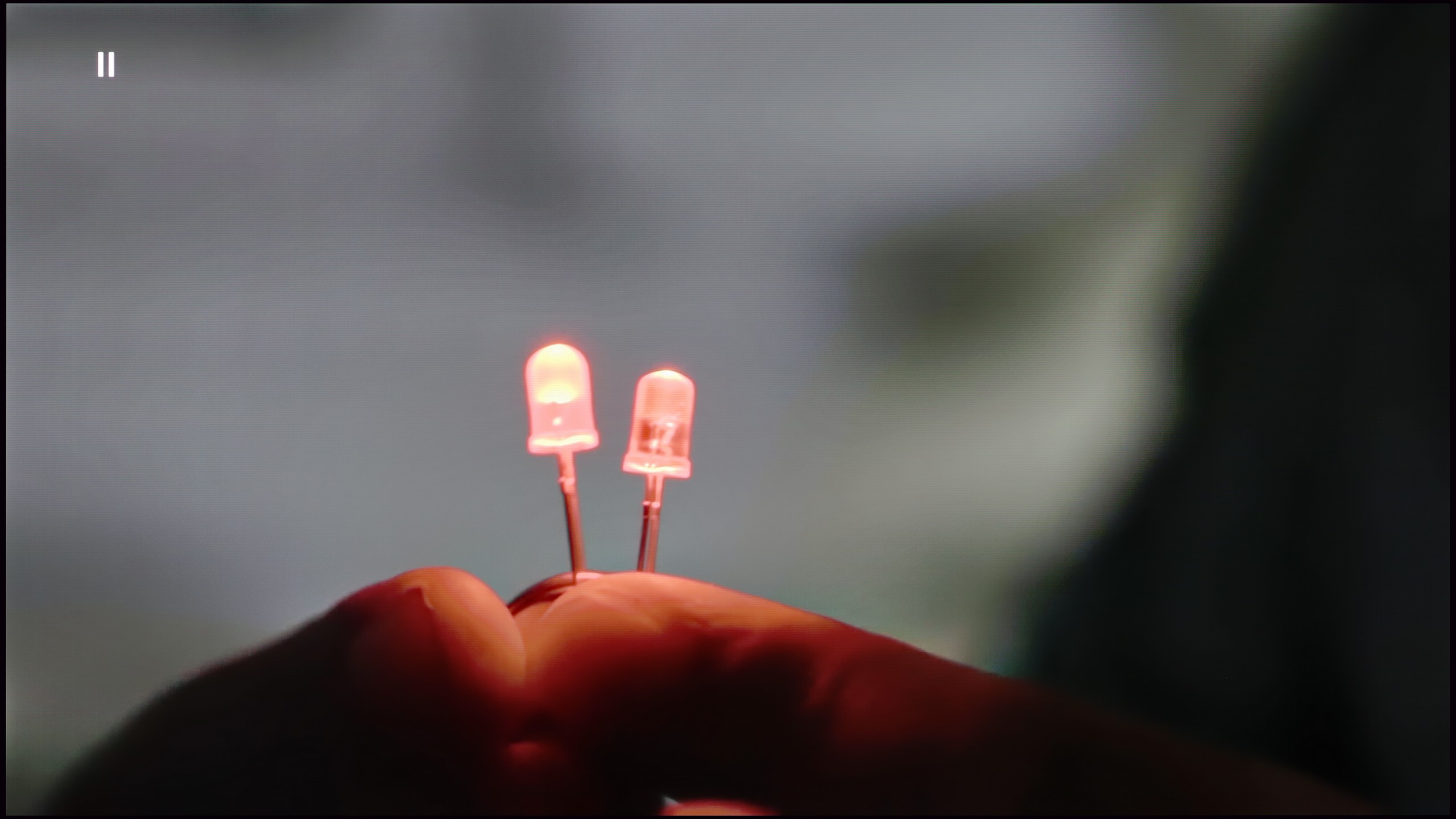
Image without overscan on the SD signal


Since we know that the television performs very well with high-quality materials, it is worth checking how it fares with lower-quality content. Here, the television shows its potential, and the applied graphics processor works really brilliantly. On the test screen with the light bulb, there are no issues with colour transitions, and the smooth gradation feature works very well – we recommend setting it to "Medium".
As for digital processing, or so-called upscaling, the television sharpens the image quite noticeably, which leads to slight aliasing, for example, on the branches in the background, but it does not remove desirable details. Nevertheless, the overall appearance is really appealing and may be to the taste of most users. However, if we prefer a softer, more plastic image, this effect can be reduced in the settings by adjusting the sharpening level according to personal preferences.
The Samsung S95F offers a noise reduction feature that is responsible for smoothing tonal transitions. It works very effectively, but in practice, it can be overly aggressive. Materials of lower quality – e.g., older recordings or videos from YouTube – become soft and plastic when this feature is activated, resembling an image digitally smoothed in a graphic program. Unfortunately, the natural film grain, which often adds authenticity to the image, disappears in the process. Fortunately, the television does not lose too many fine details, such as in skin textures or elements of the surroundings. Therefore, this feature is best used with discretion – depending on preferences, one can achieve a smooth image that is less natural, or one that is truer to the original. In our opinion, the most universal choice is the “Standard” setting.
The image scaling performs significantly better. The television handles materials of lower resolution well – even content at 576p looks quite decent, although a slight blockiness can be noticed. Overall, the effect is very good, although it somewhat falls short of what Sony Bravia 8 (II) or LG G5 can achieve. It is also worth mentioning a minor imperfection of the S95F – in older materials, overscan may occur, causing a slight trimming of the left edge of the image.
Blur and motion smoothness
8.3/10
8.5/10

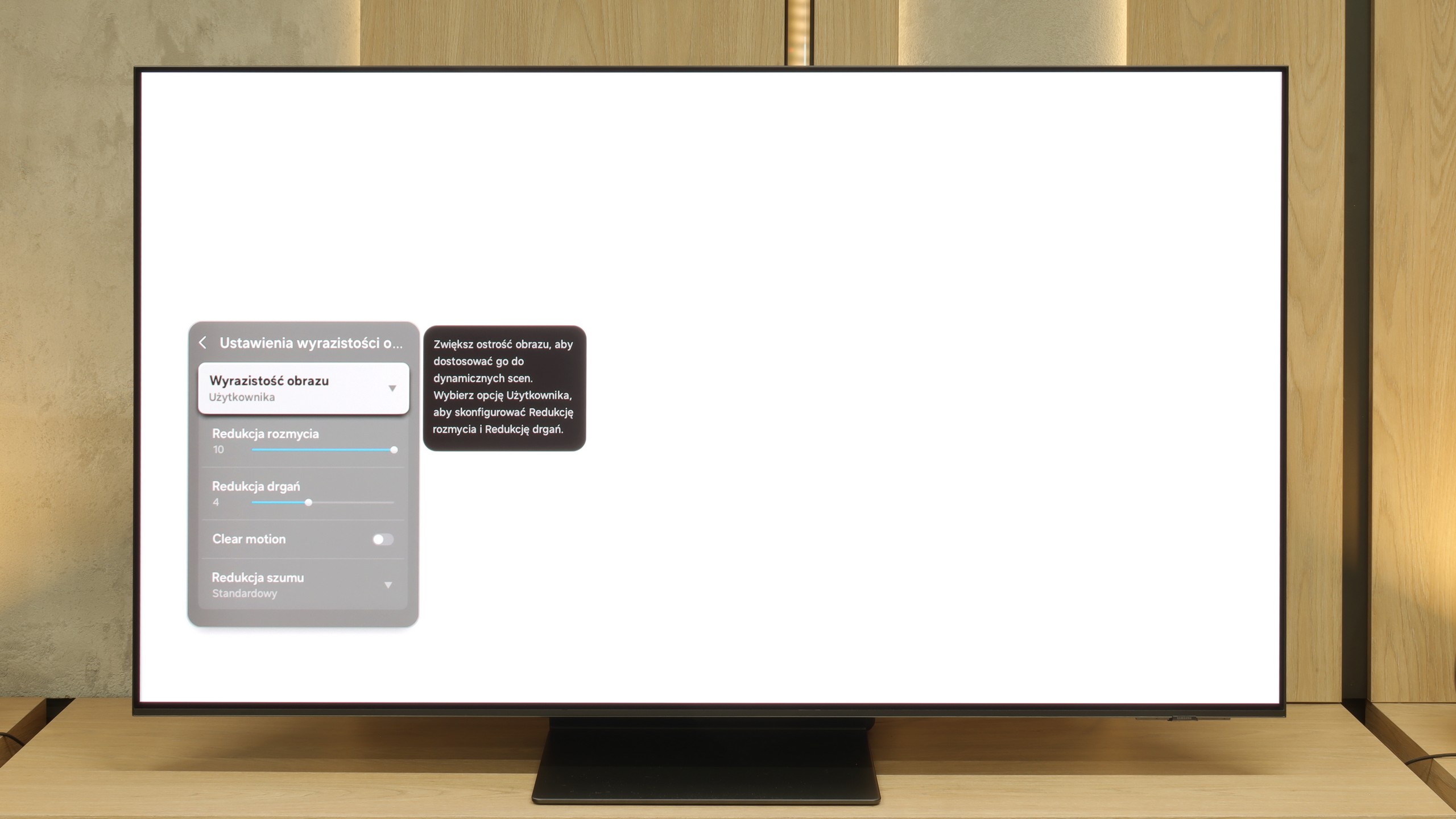
Blur (native resolution, maximum refresh rate):




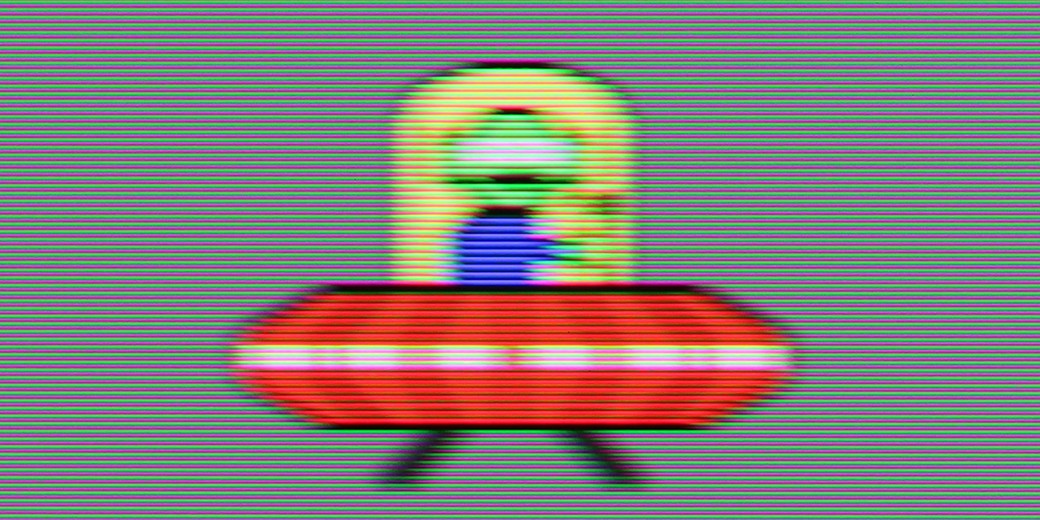
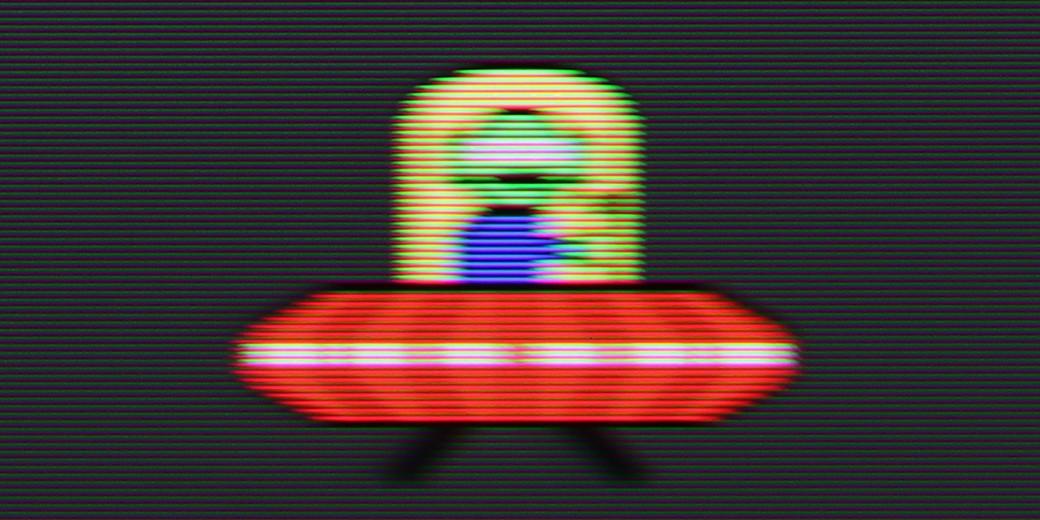
Blur (BFI function enabled):



Image flickers in this mode
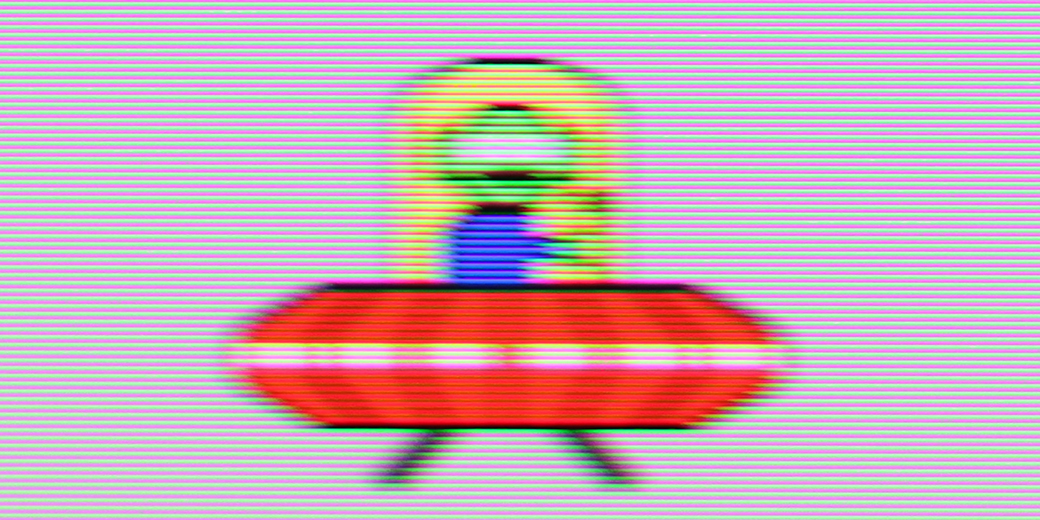
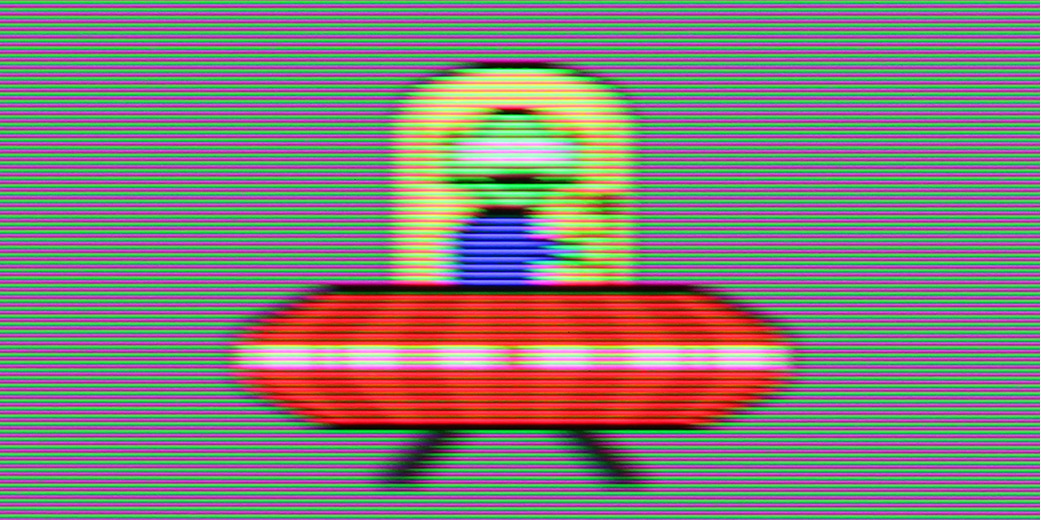
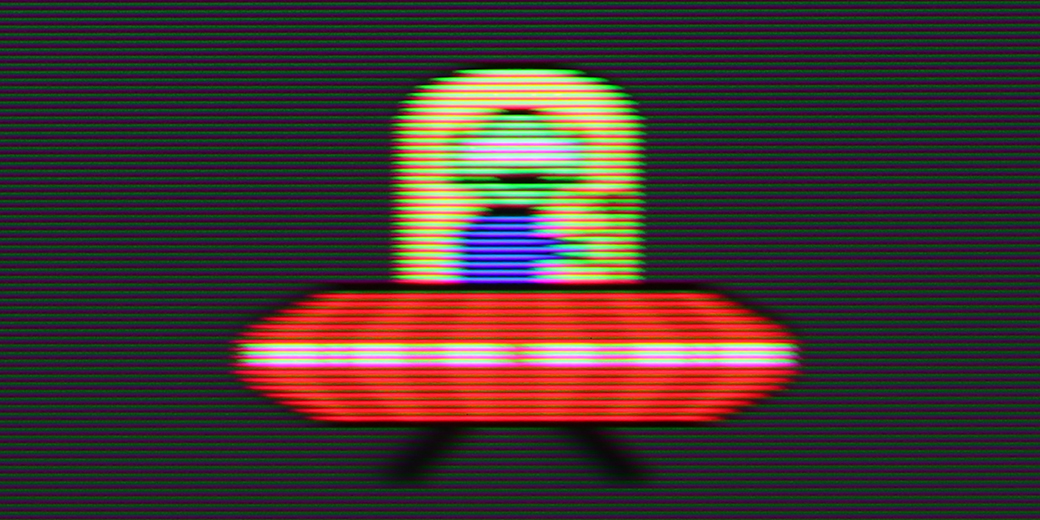
Smużenie ():
Smużenie (4K@165Hz):

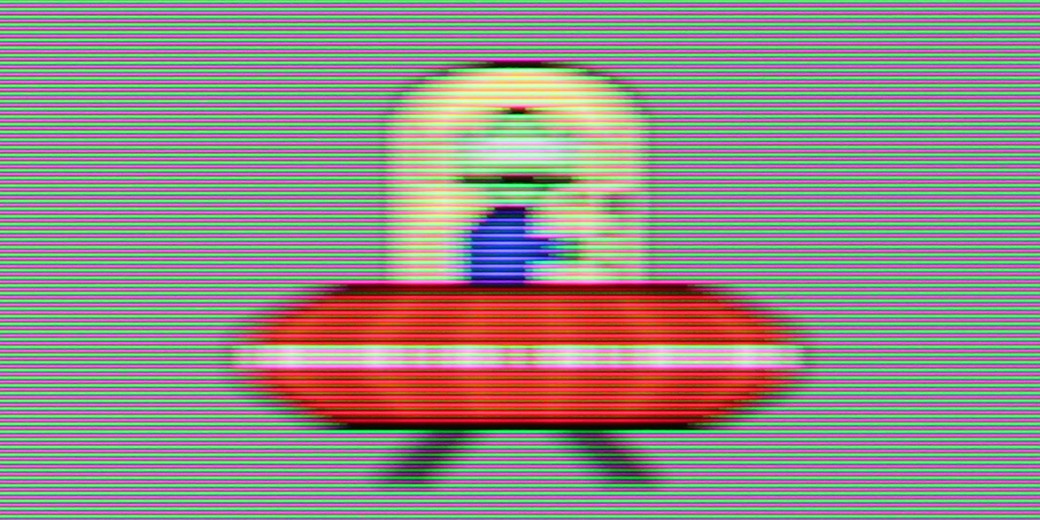
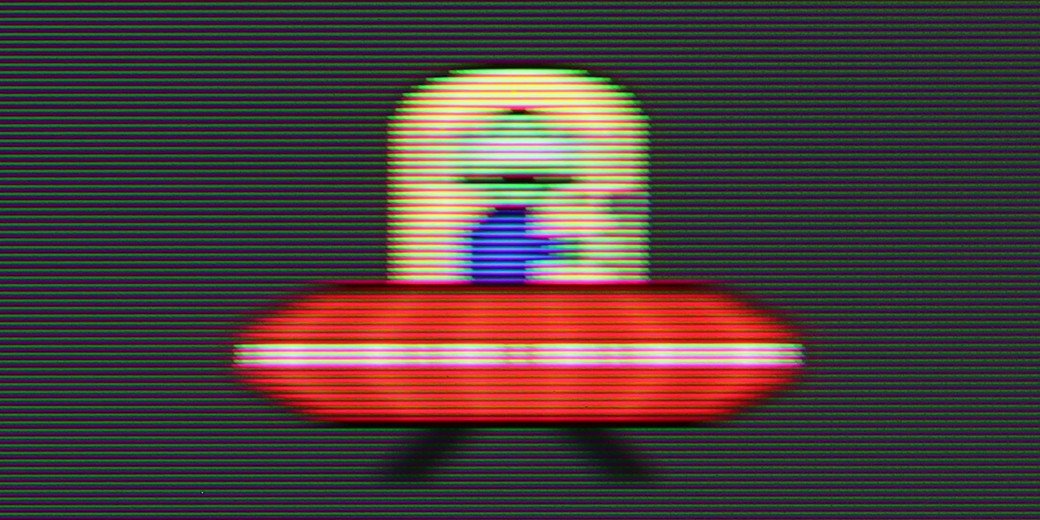
The Sony BRAVIA 7 television with a 120 Hz display will satisfy most users in terms of motion smoothness. Additionally, Sony offers the Motion Flow feature, which allows for the selection of three different picture settings, tailoring them to individual preferences: Smoothness – Film: This setting enhances motion smoothness, giving the image a more cinematic or theatrical quality. Smoothness – Camera: This setting provides even greater smoothness, useful when watching dynamic scenes such as sports broadcasts. Clarity: This setting focuses on minimising noise and motion artifacts, resulting in a more stable and clear image.
The Samsung S95F shows phenomenal performance in terms of motion fluidity. The panel operates at a native resolution of 4K with a refresh rate of up to 165 Hz, and combined with QD-OLED organic technology, it delivers incredible results. Sports and games look stunning – the image is fast, dynamic, and very natural. Additionally, the built-in motion smoother and motion blur reduction system allow you to tailor the character of the picture to your own preferences. You can opt for a more "frame-like" effect with visible film structure or a smooth, theatrical spectacle. Every viewer will find a setting that suits them.
Console compatibility and gaming features
8.1/10
9.6/10
- ALLM
- VRR
- VRR range48 - 120Hz48 - 165Hz
- Dolby Vision Game Mode
- Correct implementation of HGIG
- 1080p@120Hz
- 1440p@120Hz
- 4K@120Hz
- Game bar

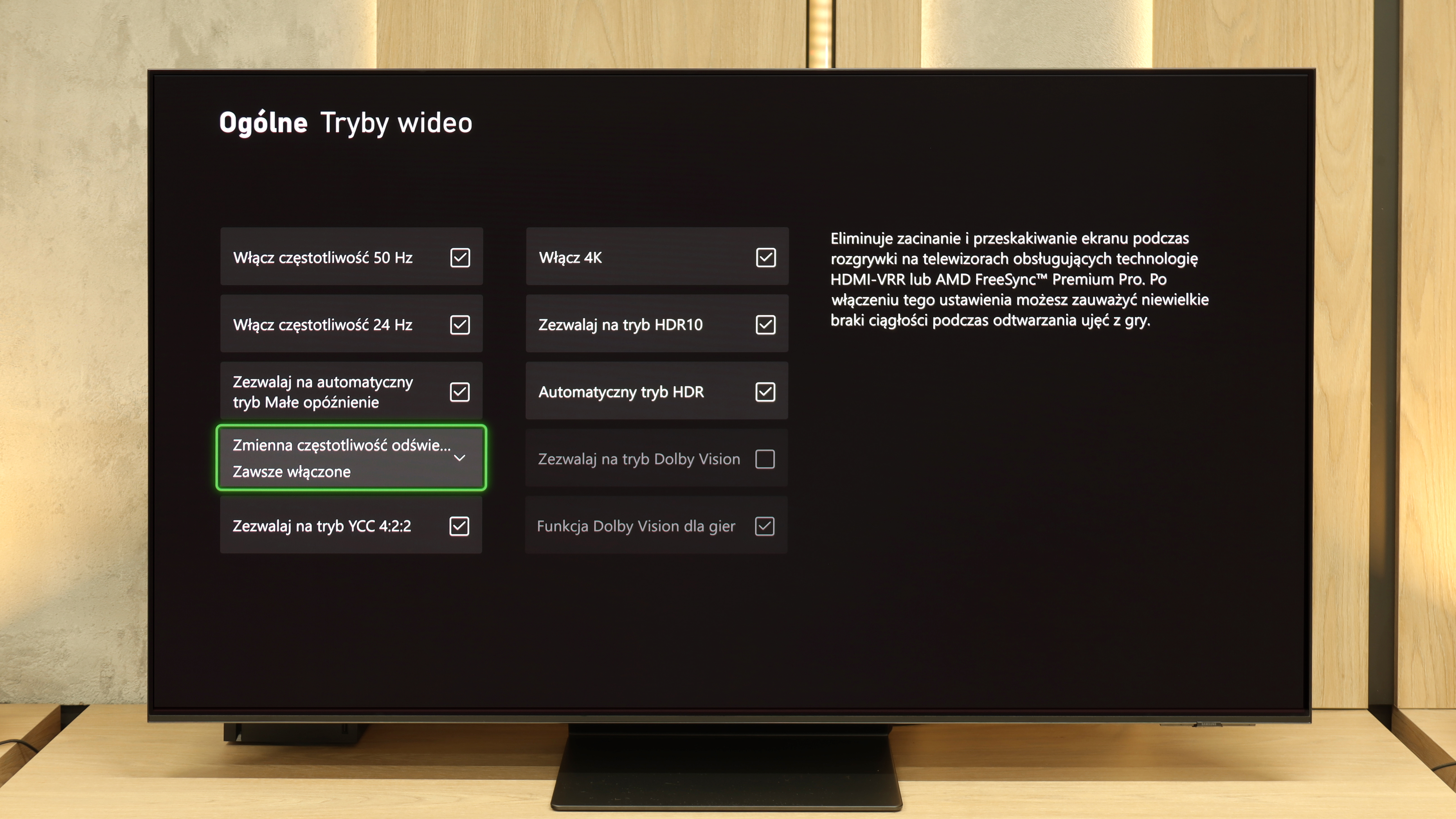

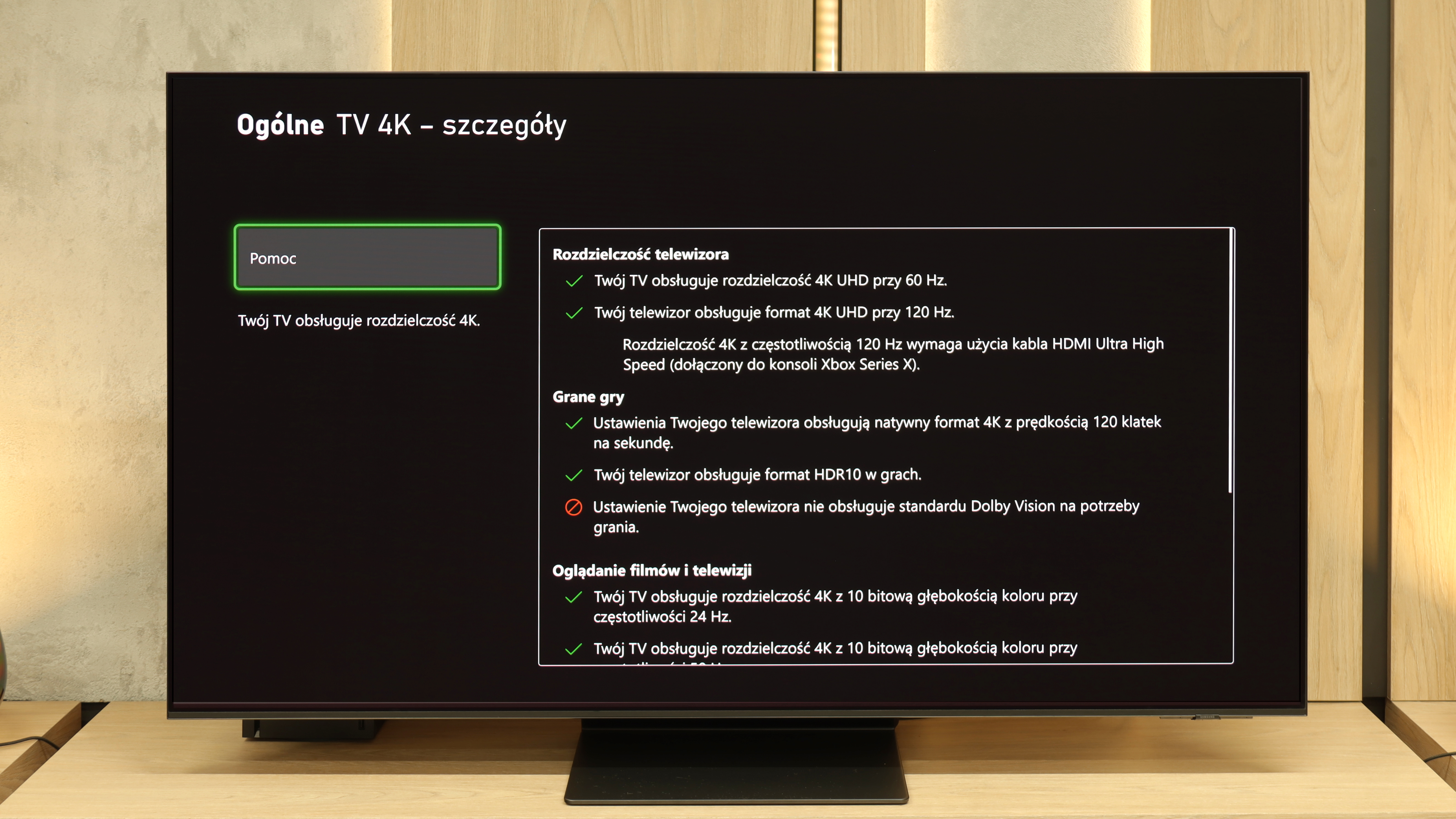

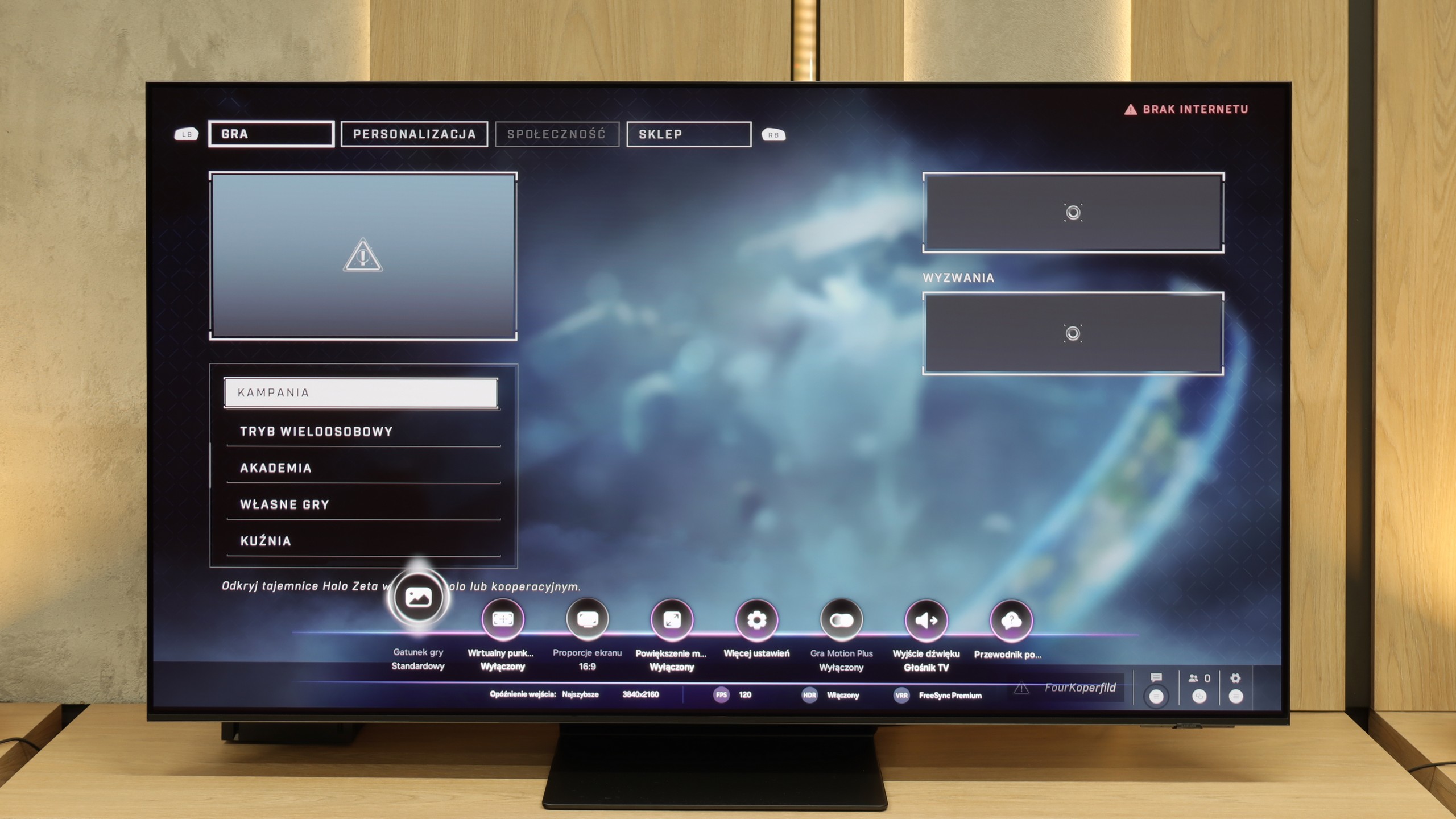

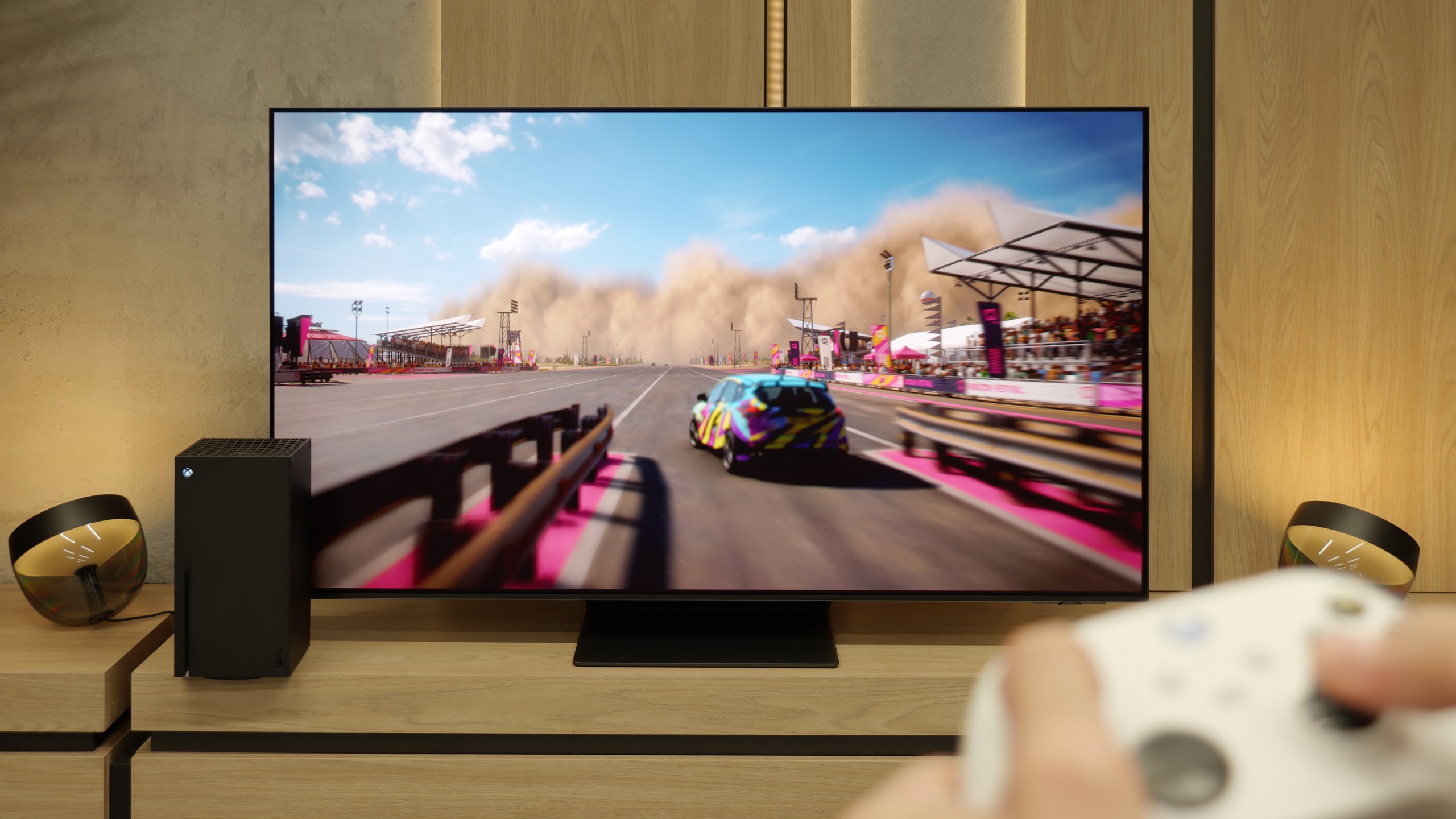
Sony Bravia 7 has significantly improved its capabilities for working with consoles compared to earlier models. The television supports variable refresh rate (VRR), which eliminates the tearing effect, and is compatible with graphics cards, ensuring smooth display. The auto low latency mode (ALLM) effectively reduces input lag, which is crucial in dynamic games. Dolby Vision with low latency additionally provides impressive HDR effects that look great during gameplay.
Sony Bravia 7 also offers a Game Bar feature, which allows quick access to settings and monitoring parameters while gaming. An interesting option is the ability to enable a virtual on-screen crosshair, which can provide a slight advantage in shooter games. Nevertheless, compared to the Bravia 9 model, the HGIG feature in the Bravia 7 does not perform as well, which may be noticeable for more demanding gamers – especially as the HGIG mode is becoming increasingly popular among players as the preferred method for reproducing HDR effects.
A drawback is the lack of support for 1440p@120 Hz resolution, which could make gaming easier for users with less powerful graphics cards. Furthermore, the Sony Bravia 7 is equipped with two HDMI 2.1 ports, one of which is often used to connect an audio system via eARC, limiting the available connections for new generation consoles.
The advantages of low motion blur and excellent motion fluidity characteristic of OLED panels are just the beginning, as the Samsung S95F has been designed with gamers in mind. The manufacturer has equipped it with four HDMI 2.1 ports – although limited to a bandwidth of 40 Gb/s, in practice this has no impact on compatibility with consoles or PCs. We get a full suite of gaming features: variable refresh rate (VRR), automatic game mode (ALLM), as well as a very well-implemented HGiG standard, which ensures that HDR titles look exactly as their creators intended. Completing the package is the Game Bar – a clear settings hub where we can preview and change all key image parameters with one motion. The proprietary motion smoother, Game Motion Plus, also deserves commendation, as it can smooth out animations, which is particularly useful in productions running at 60 frames, where stability is not always exemplary. While support for Dolby Vision in games is lacking, it’s hard to view this as a serious drawback – Samsung compensates with other solutions. This is one of the best, if not the best, gaming televisions available on the market today.
Input lag
9.7/10
10/10
SDR
HDR
Dolby Vision
Sony BRAVIA 7 delivers exceptional results in terms of input lag, particularly with 120 Hz content, where the delay is around 11 ms – this is an excellent result that will satisfy even the most demanding gamers. The Dolby Vision mode also deserves recognition, as it is usually associated with higher input lag, but here it works really well, providing a comfortable gaming experience. However, we deducted 0.3 points for the results above 20 ms for 60 Hz content, although we believe that for most users, this difference is more of a placebo effect.
The input lag on the S95F is at a level where it is difficult to even talk about any delay. At 5 ms with 120 Hz content, there is no room for hesitation between pressing the button and the response on the screen. It’s pure immediacy. And if someone is worried about the 60 Hz mode – don't worry, there it’s 10 ms, which still places the television among the absolute best and gives no reasons for complaints.
Compatibility with PC
7.6/10
8.8/10

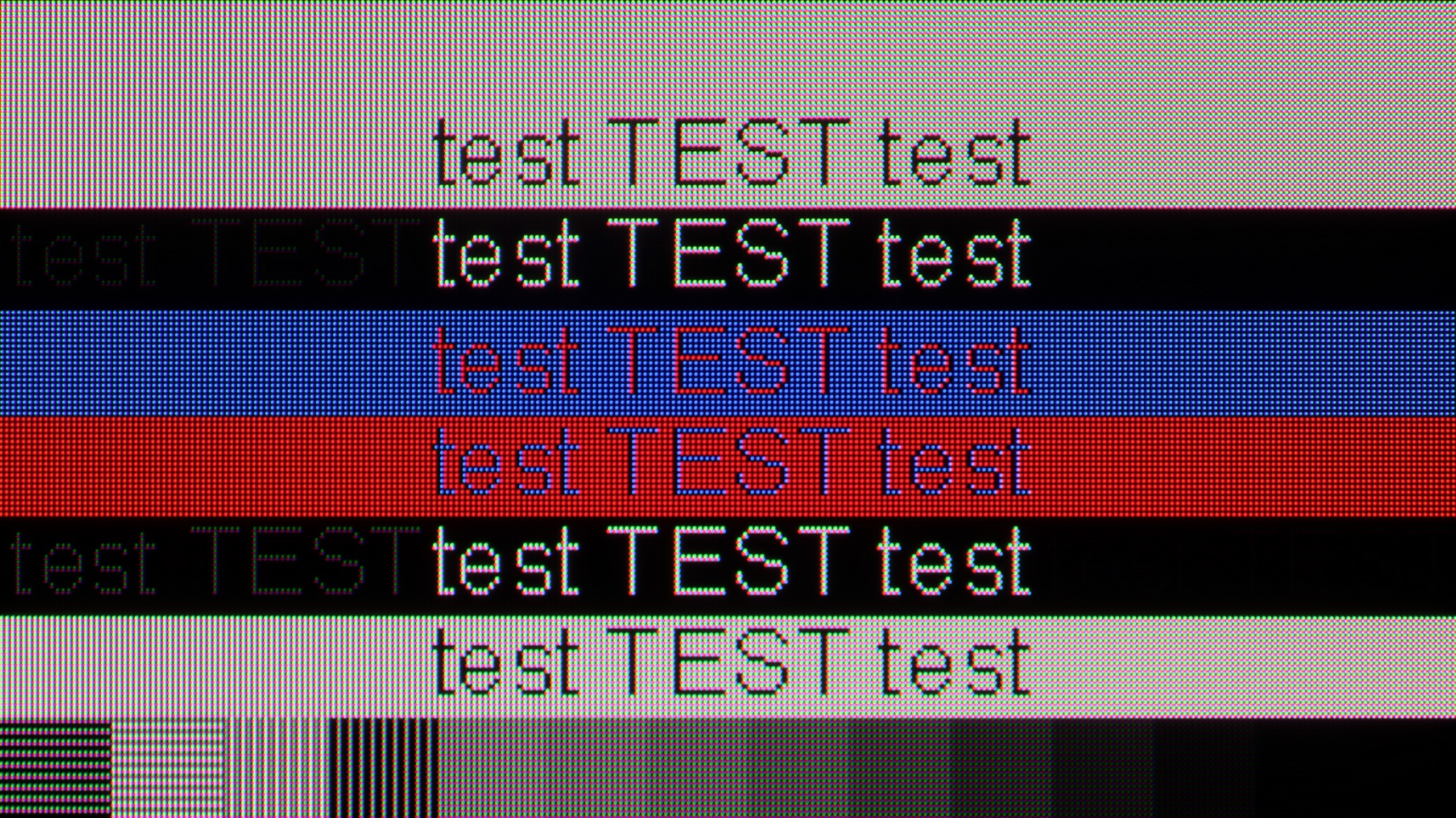
The Sony BRAVIA 7 TV performs well when working with a computer, providing clear and readable fonts. An input lag of 11 ms is also an excellent result that will satisfy users using the TV for gaming and work. However, it should be noted that in the case of grey letters, a slight fading of some pixels can be observed, which somewhat deteriorates the readability of darker fonts, for which we deducted a few points.
The S95F with a QD-OLED panel is a true magnet for PC gamers. The 165 Hz refresh rate combined with virtually imperceptible input lag and full support for G-Sync and FreeSync means the television performs like a top-tier monitor. Dynamic action games, shooters, and racing titles gain the smoothness and responsiveness that are hard to find in competing models. When working with text, a subtle rainbow halo can be seen around the letters, characteristic of the pixel structure of QD-OLED, but with proper handling of chroma 4:4:4, everything remains readable and does not interfere with everyday use.
Viewing angles
3.4/10
9.8/10
The Sony BRAVIA 7 television has poor viewing angles, which is characteristic of VA matrices. The picture quickly loses quality when viewed from a greater angle – colours become washed out and contrast decreases. Considering the price of the device, it is a pity that a coating was not applied to extend the viewing angles, which would certainly improve the watching comfort from different spots in the room.
The Samsung S95F with a QD-OLED panel currently offers some of the best viewing angles on the market. Whether we are sitting directly in front or to the side of the sofa, the image remains consistent – colours do not lose intensity and contrast does not deteriorate. It is a screen where it is hard to find a weak point in this category.
TV efficiency during daytime
8.4/10
7.1/10

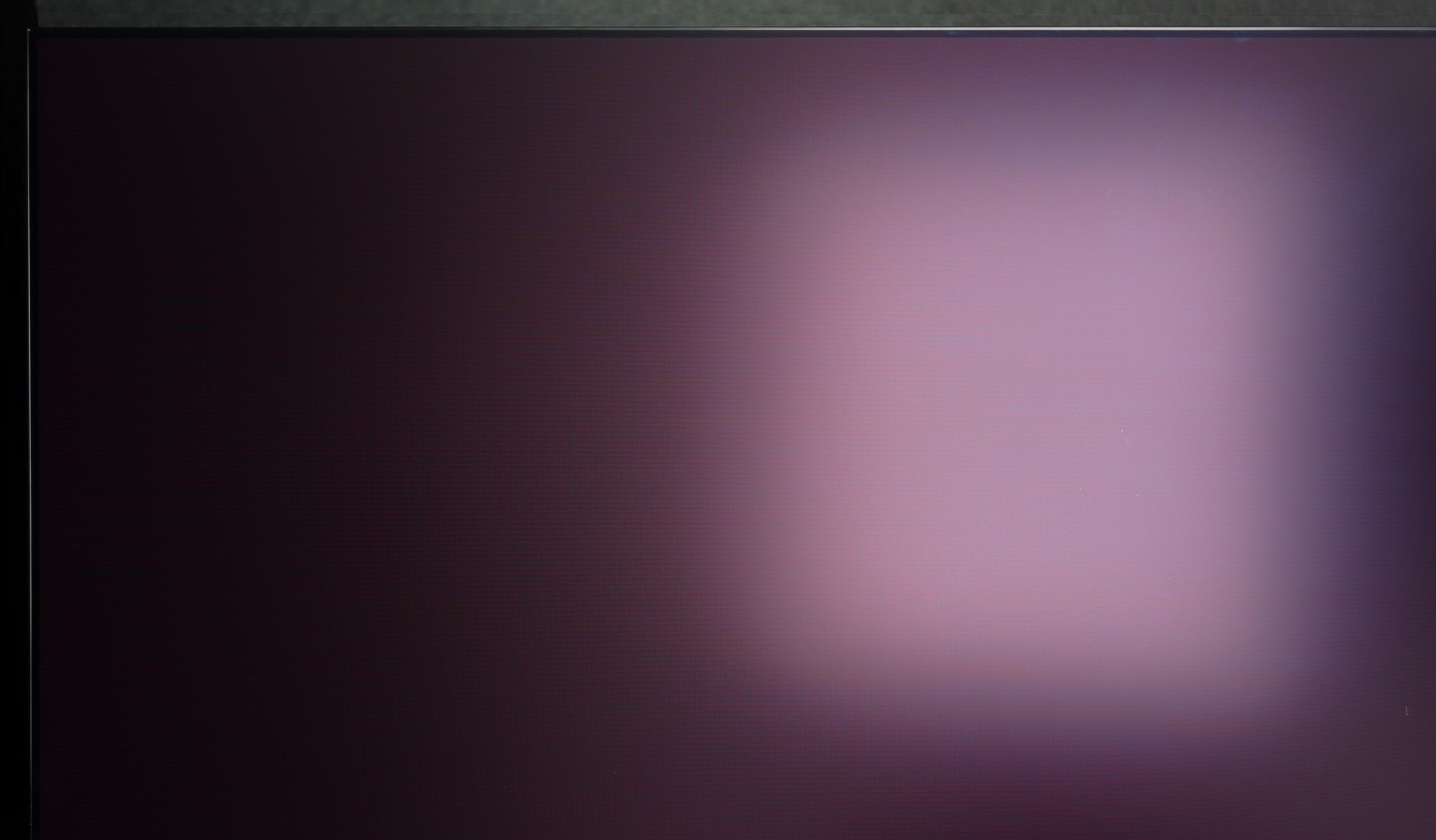

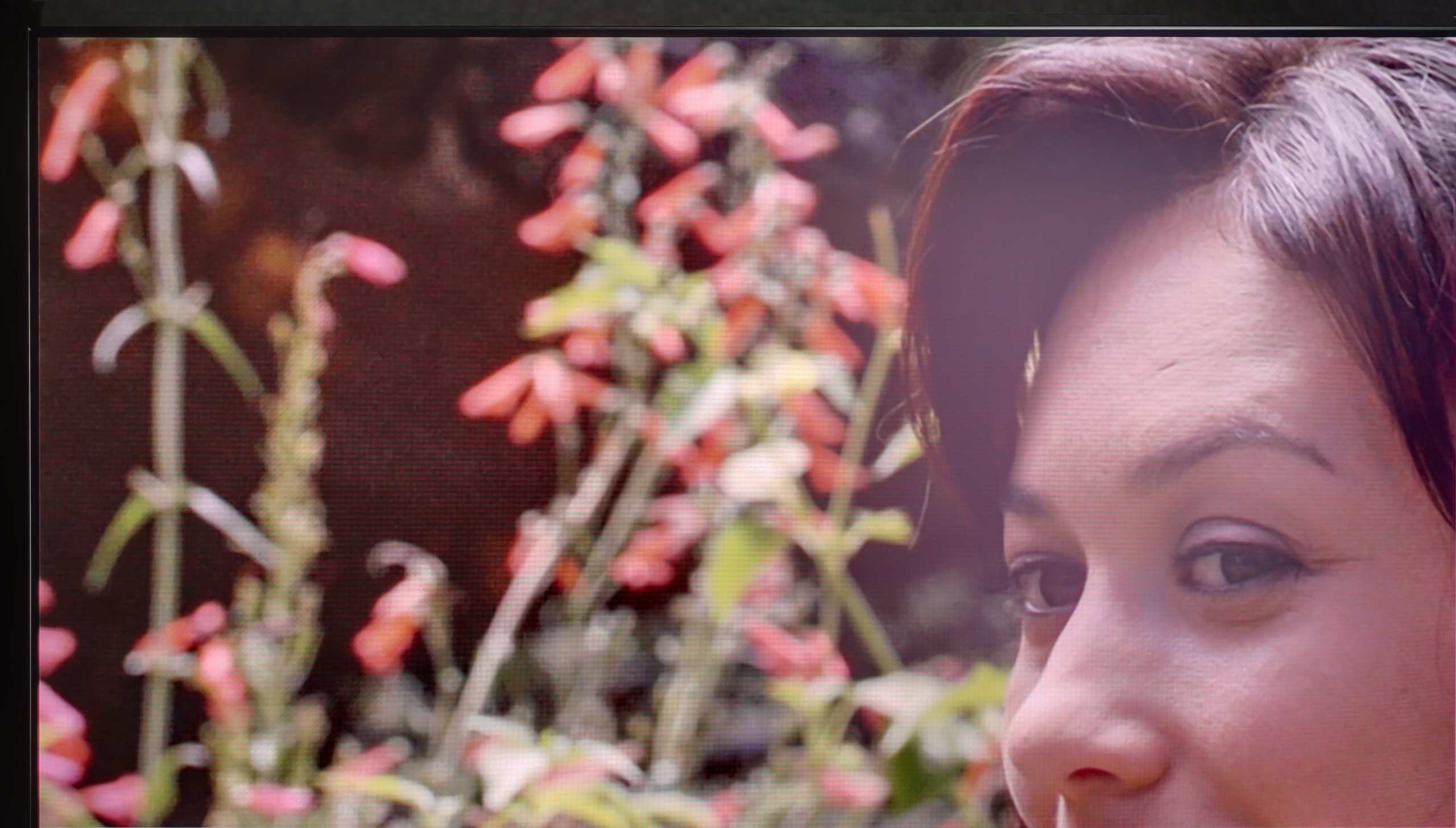
Matrix brightness
Average luminance SDR
SAMSUNG OLED S95F (QD-OLED): 671 cd/m2
Sony Bravia 7 (XR70): 1014 cd/m2
BRAVIA 7 performs excellently when watching in bright environments. The satin coating effectively reduces reflections while simultaneously minimising the blurring of elements to the sides, resulting in very good visibility during the day. A brightness level of 1000 cd/m² in SDR mode is astonishing and ensures that the image remains sharp even in heavily lit rooms.
One of the biggest distinguishing features of the Samsung S95F compared to its competitors is the matte screen coating. This solution excels in reducing reflections and glare – the image remains clear even in a brightly lit living room. However, it is important to remember that the characteristics of the QD-OLED matrix come with a certain compromise. Under intense light, the black can brighten, taking on a shade of cherry black, which affects the saturation of colours. On the other hand, the brightness of the panel, reaching around 700 nits in SDR mode, is fully sufficient for the television to perform flawlessly in typical daytime conditions.
Details about the matrix
Subpixel Structure:

Panel uniformity and thermal imaging:

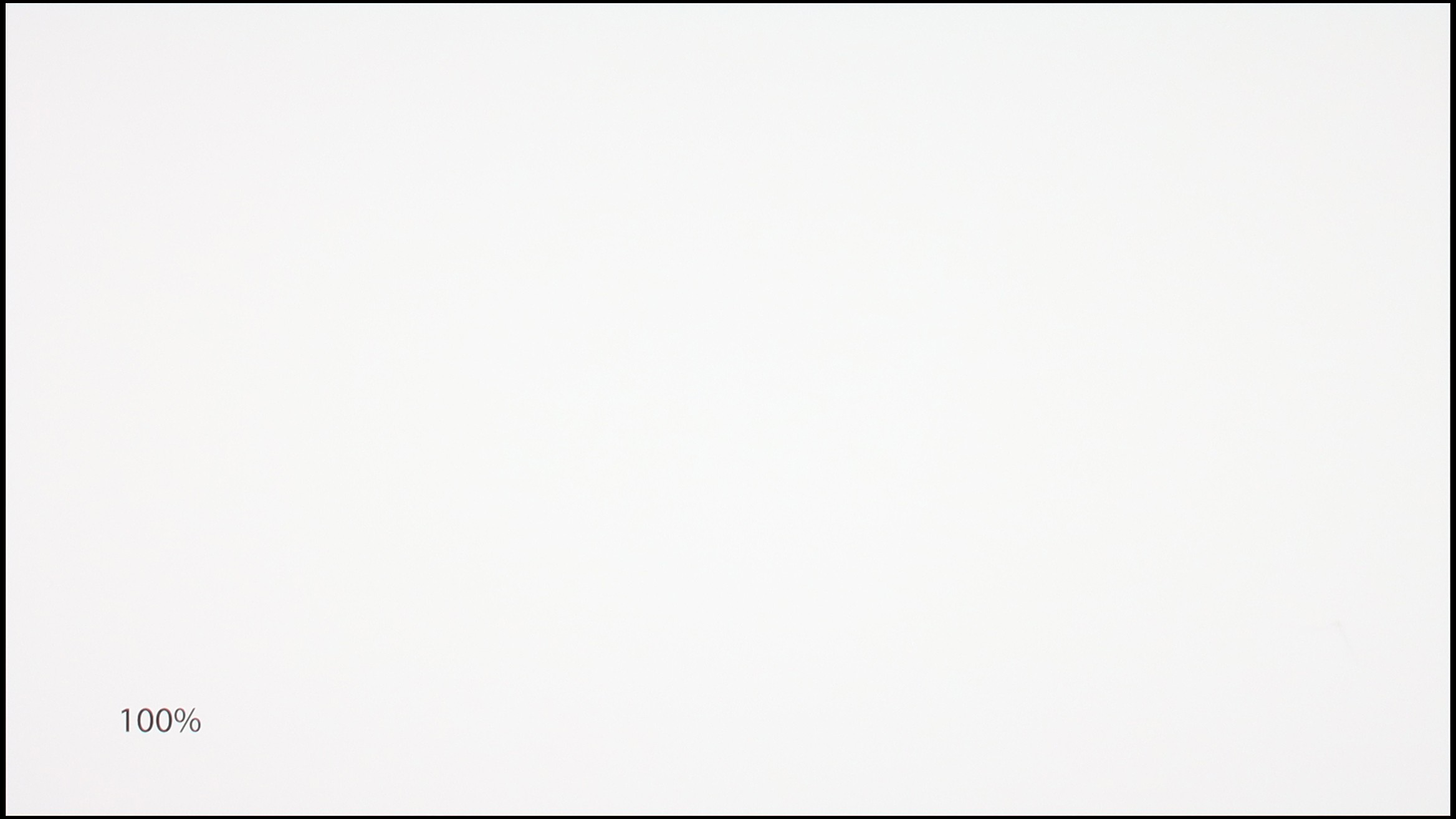
Sony Bravia 7 (XR70)
SAMSUNG OLED S95F (QD-OLED)
TV features
8.8/10
7.9/10
- HDMI inputs2 x HDMI 2.0, 2 x HDMI 2.1 48Gbps0 x HDMI 2.0, 4 x HDMI 2.1 40Gbps
- OutputsToslink (Optical audio), eARC (HDMI), ARC (HDMI)Toslink (Optical audio), eARC (HDMI), ARC (HDMI)
- Network InterfacesWi-Fi 2.4GHz, Wi-Fi 5GHz, Ethernet (LAN) 100MbpsWi-Fi 2.4GHz, Wi-Fi 5GHz, Ethernet (LAN) 100Mbps
- TV receptionDVB-T, DVB-T2, DVB-S, DVB-S2, DVB-CDVB-T, DVB-T2, DVB-S, DVB-S2, DVB-C
Classic features:
- Recording to USB (terrestrial TV)
- Recording programming
- Picture in Picture (PiP)
- RF remote control (no need to aim at the screen)
- Backlit remote control
- Teletext
- Audio only mode
- Bluetooth headphones support
- Simultaneous Bluetooth headphones & TV audio
Smart features:
- AirPlay
- Screen mirroring (Windows Miracast)
- Voice search
- Voice search in native language
- Ability to connect a keyboard and mouse


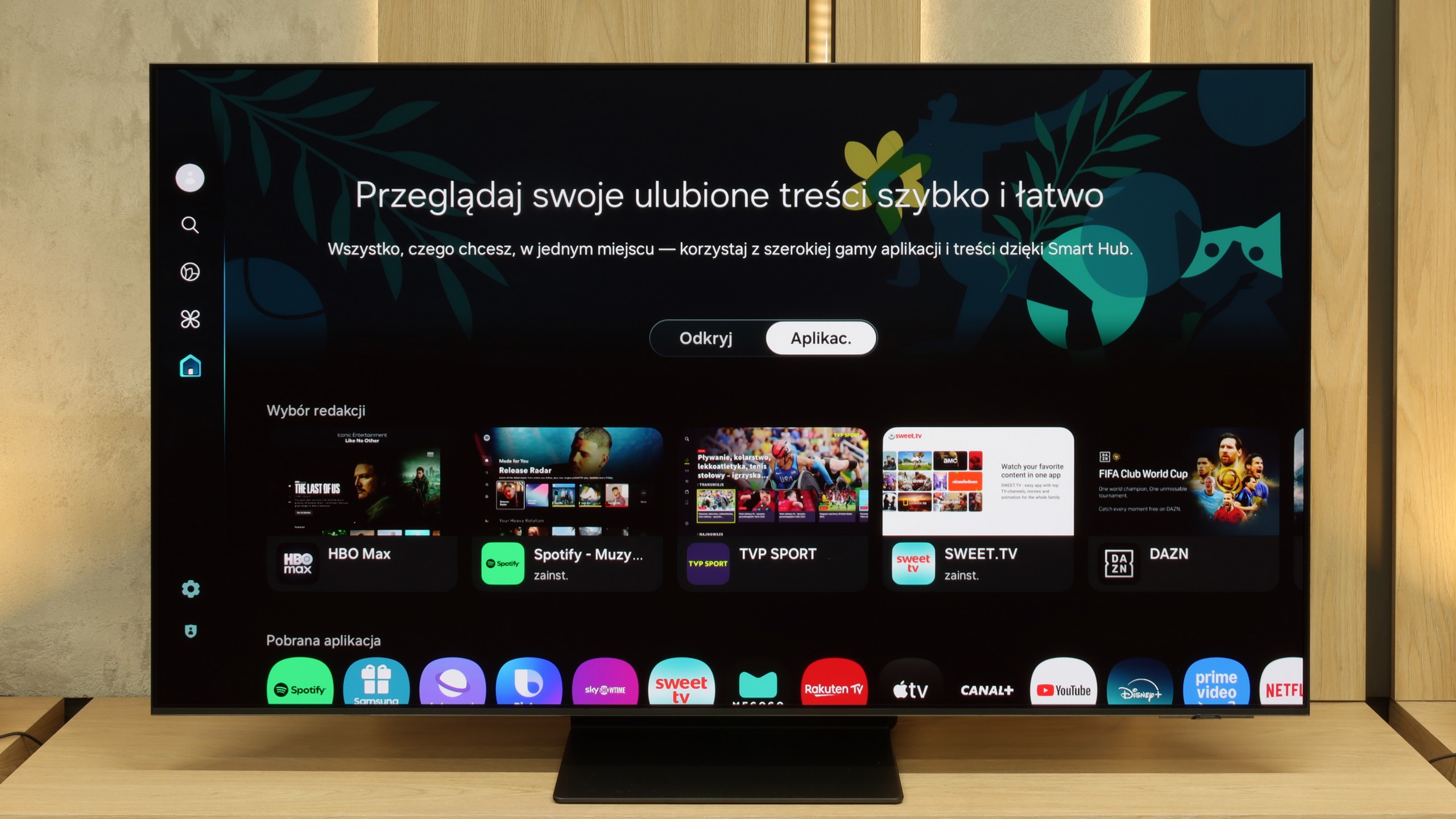
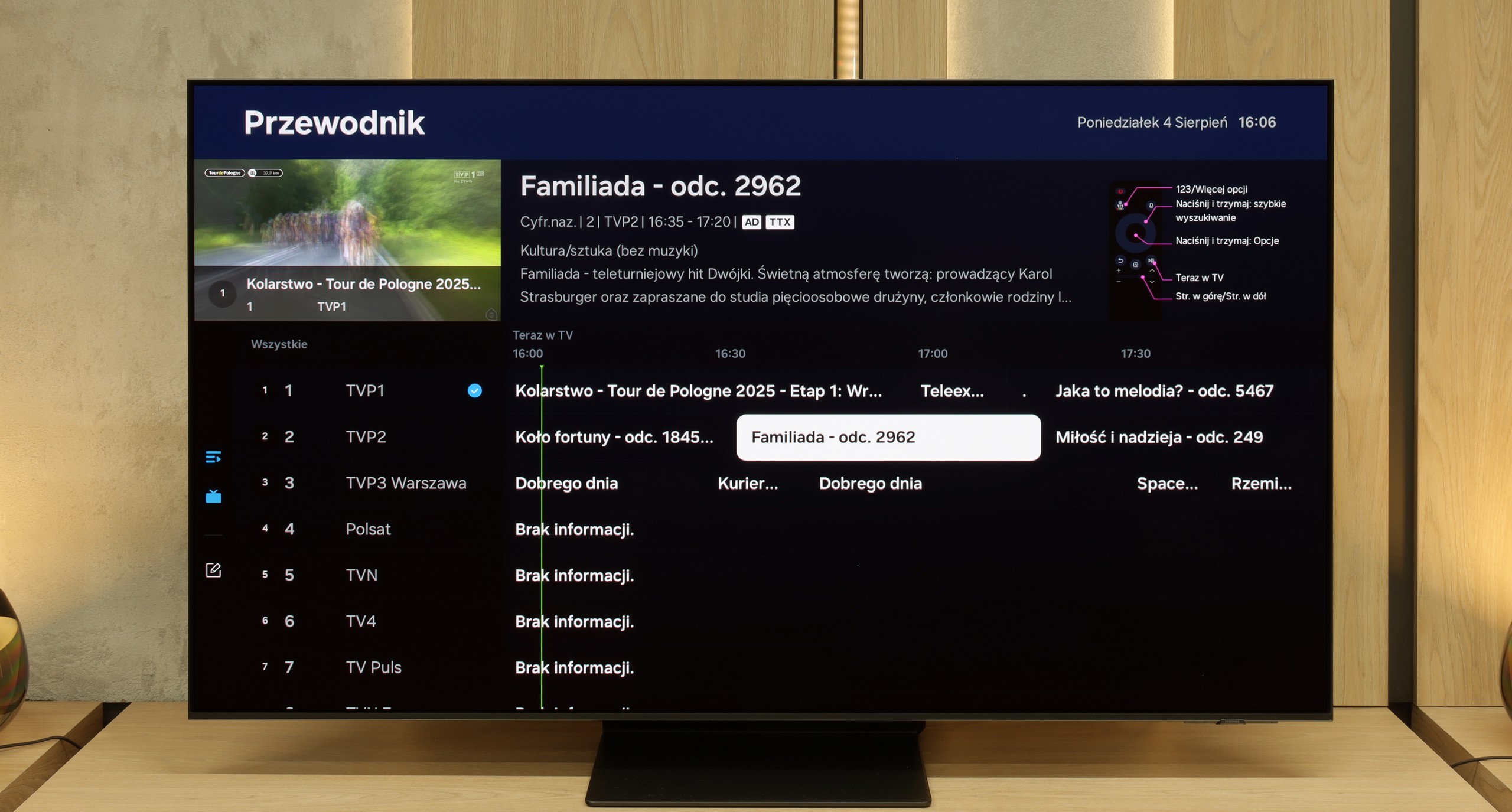
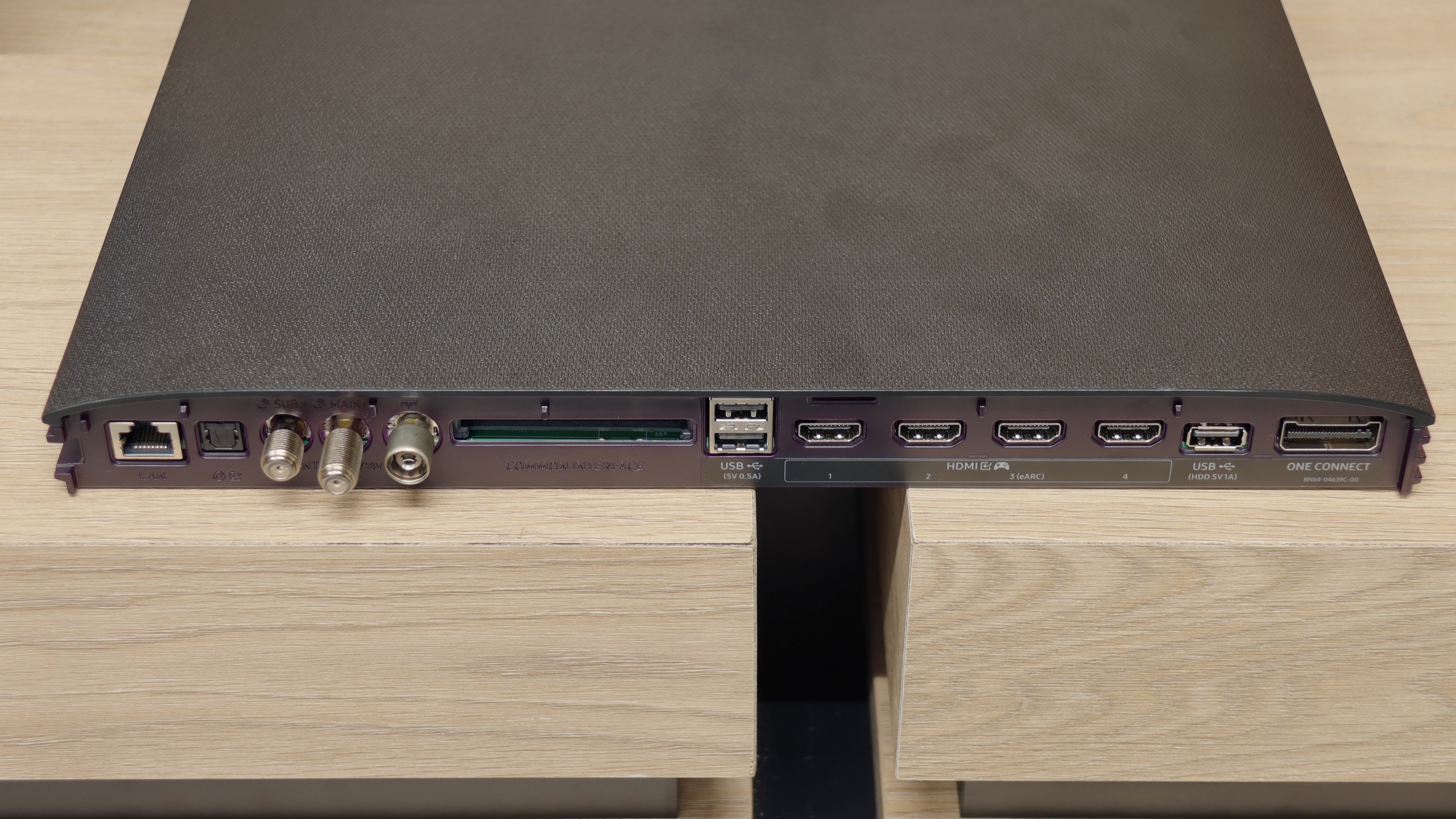
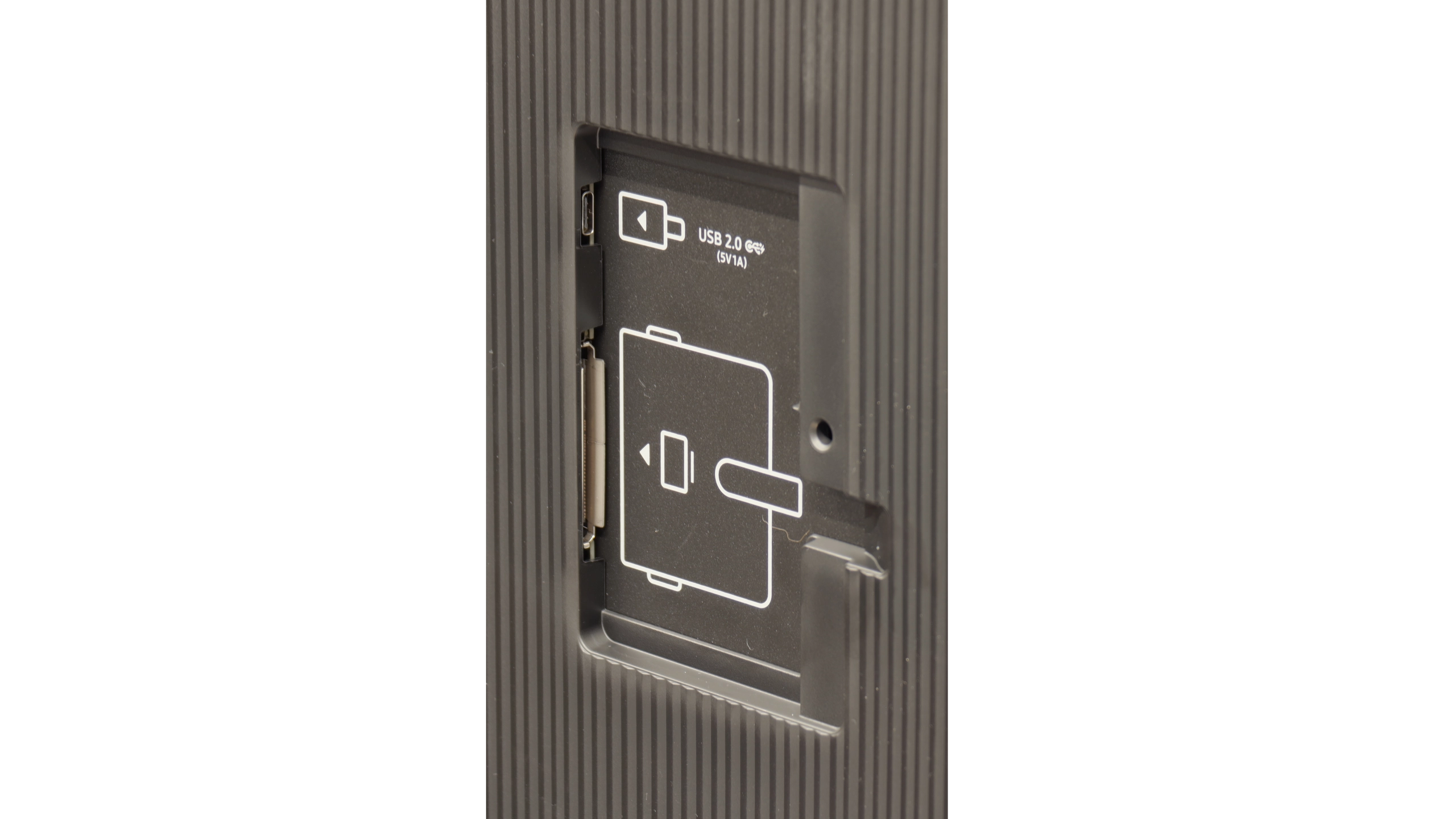
Sony Bravia 7 runs on the Google TV system, which offers an intuitive and quick interface, allowing easy access to a multitude of applications. Google Assistant supports the Polish language, making the use of the television even more convenient and personalised. The interface is clear, and access to features and applications is quick and trouble-free. It is worth mentioning the remote control, which is charged via a USB-C port. Additionally, the remote is backlit, which significantly facilitates its use at night.
Sony Bravia 7 offers wide-ranging capabilities that will satisfy most users. The ability to record programmes and easily connect devices via Bluetooth are significant pluses. Unfortunately, it lacks the Picture-in-Picture (PiP) feature, which could prove useful for watching two sources of video simultaneously.
XR70 stands out with its practical and elegant design. The television is equipped with a 4-position stand, allowing it to be adapted to various spaces and settings – this is particularly useful when we seek flexibility in interior arrangement. Additionally, the slim aluminium frame gives the device a modern and stylish appearance. Although it is not as slim as some competitive Korean models, it still looks very attractive and solid.
SmartTV in S95F: Tizen
Against the competition, the Samsung S95F not only shines with its picture quality but also demonstrates that smart features can be truly well thought out. Tizen operates very quickly, does not freeze, and gives the impression that everything is at hand – from AirPlay to simple voice search that works even when the remote control is misplaced. Admittedly, the system is not as open as Android, but frankly, very few will feel its shortcomings – there are plenty of applications, and additional features like integration with SmartThings only enhance the sense of completeness.
Classic Features of the S95F
Interestingly, Samsung reminds us that a television is still a television. Therefore, alongside modern gadgets, we also find the classics – PiP, teletext, or the option to pair headphones via Bluetooth. There is no recording to USB from DVB-T/T2 tuners, but instead, we get a remote control that can also manage the Canal+ decoder and other devices in the living room. And the cherry on top is the One Connect module – all connections in a separate box, making connecting equipment no longer an extreme sport.
Playing files from USB
8.6/10
9/10
Supported photo formats:
Maximum photo resolution:

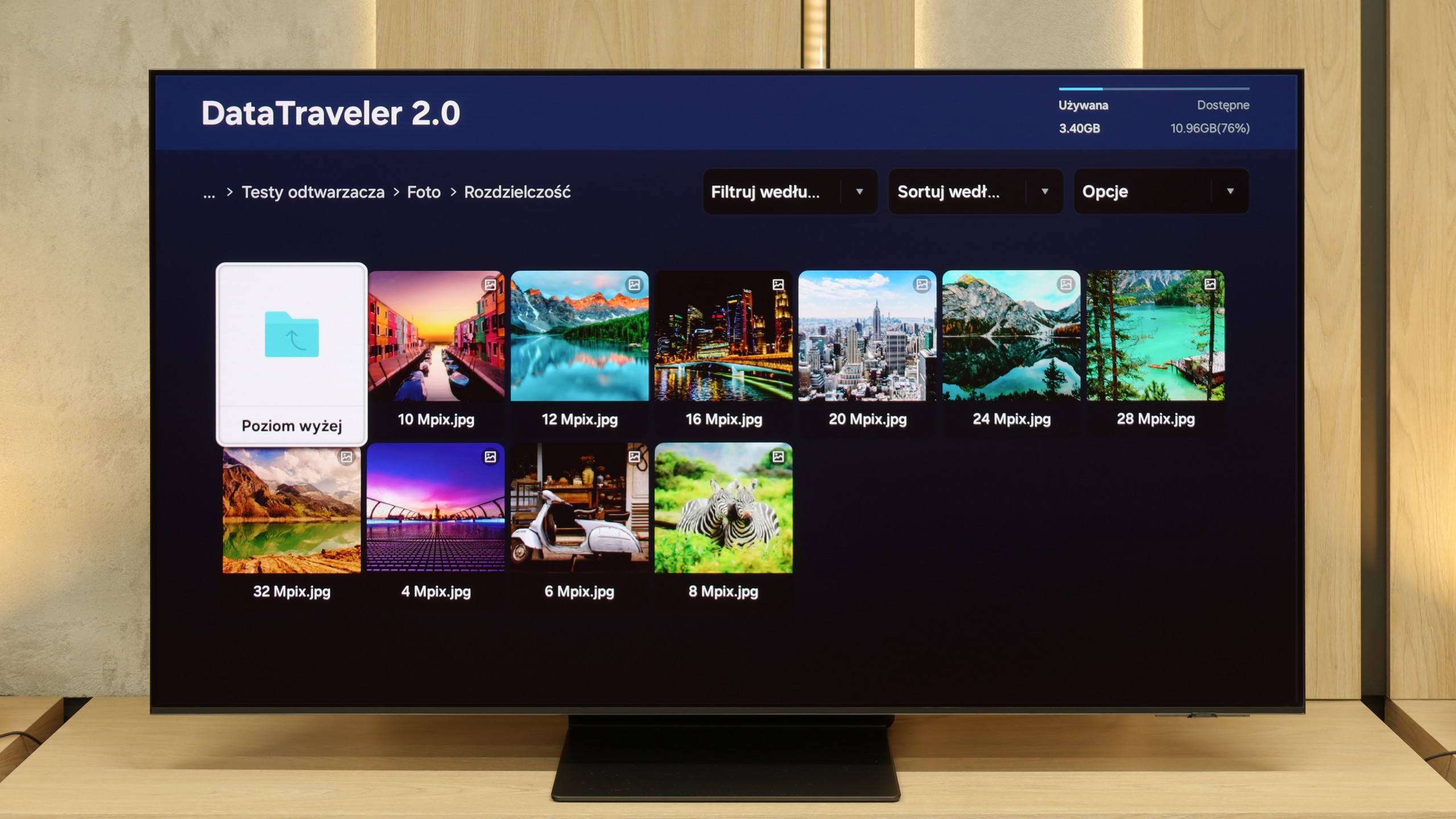
The built-in player handles most popular video and audio formats, allowing you to enjoy a wide range of content without any issues. Although there are slight shortcomings when playing photos, thanks to the Google TV system, you can easily install other applications that effectively solve this problem and expand the multimedia capabilities of the television.
The built-in player in the S95F does a decent job – films and music start up without any problems, so it is completely sufficient for everyday use. The trouble begins only when we expect full compatibility with what the manufacturer claims. Not all image formats work, and HEIC files simply refuse to cooperate. However, for most people this will not be an obstacle – for basic applications, such a player performs flawlessly.
Apps
9.6/10
8.7/10














































Sound
7.8/10
8/10
- Maximum volume-82dB
- Dolby Digital Plus 7.1
- Dolby True HD 7.1
- Dolby Atmos in Dolby Digital Plus (JOC)
- Dolby Atmos in Dolby True HD
- DTS:X in DTS-HD MA
- DTS-HD Master Audio
Although the Sony Bravia 7 television is equipped with only a 2-channel speaker system (2.0), there are two speakers per channel with a total power of 40 W. As a result, the sound quality is really good, and the bass is noticeable, making watching movies and listening to music more enjoyable.
The built-in speakers of the S95F can be pleasantly surprising – they sound enjoyable and clear, and despite the slim design of the television, it’s hard to say that the sound is flat. Admittedly, the bass could be stronger, but that's a natural compromise given such a thin casing. For everyday watching of films or series, the set performs excellently. Those who prefer stronger experiences should consider a soundbar – preferably one with Q-Symphony support. Then, the television speakers and the Samsung soundbar work together.
Acoustic Measurements
No acoustic data
82dBC (Max)
75dBC
